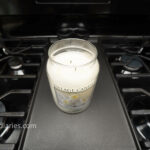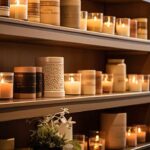Candles
How to Light a Three Wick Candle

So, you’ve recently purchased an elegant three-wick candle and are eager to enjoy its cozy and welcoming light. Don’t worry, we’re here to walk you through how to light it effortlessly and like a pro.
In this guide, we’ll show you the necessary steps to take in order to successfully light a three wick candle. From gathering the supplies to ensuring all wicks burn evenly, we’ve got you covered.
By following our instructions, you’ll be able to create a serene and cozy ambiance in no time. So let’s get started on this journey to mastering the art of lighting a three wick candle.
Key Takeaways
- Select a three wick candle based on scent, size, and burn time.
- Use a long-reach lighter or matches to safely light all three wicks.
- Maintain a safe distance from the flame and check the condition of the lighter or matches.
- Prioritize safety by trimming wicks, using a heat-resistant surface, and never leaving a burning candle unattended.
Gather the Necessary Supplies
To begin, we start by gathering the necessary supplies for lighting a three wick candle. Here is a supplies checklist to ensure you have everything you need:
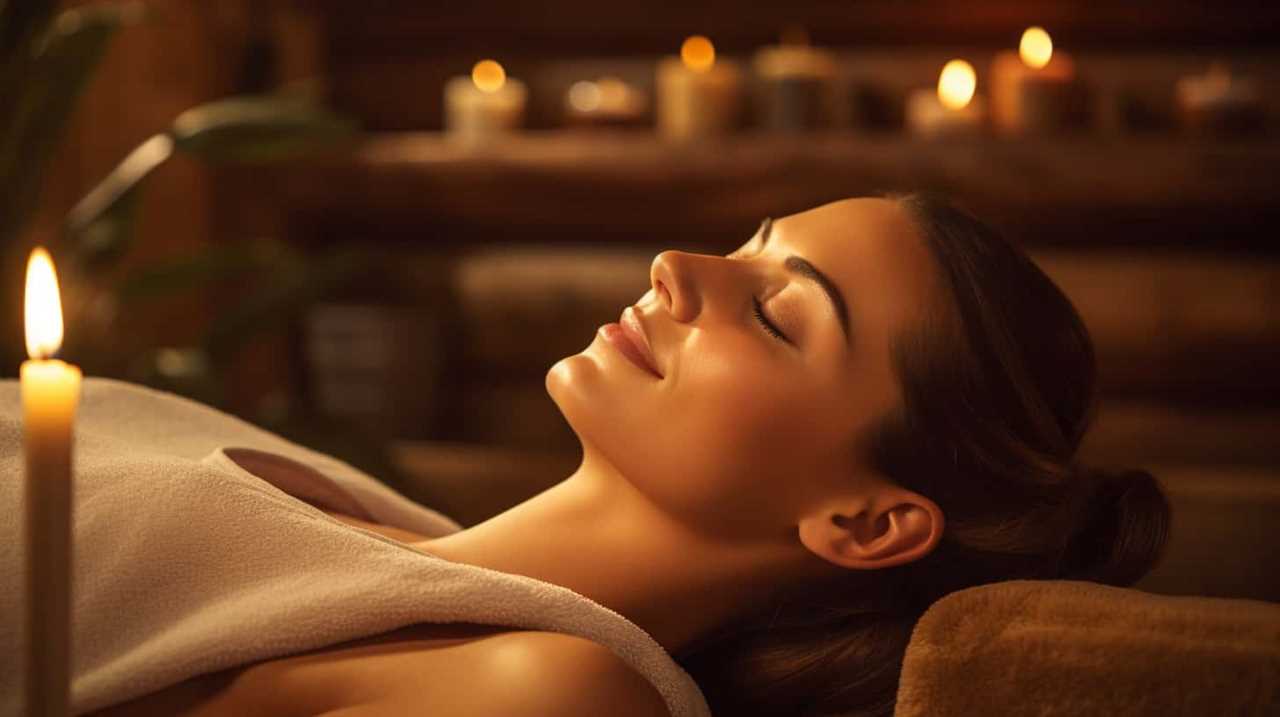
- Three wick candle of your choice – When selecting the right candle, consider the scent, size, and burn time. Opt for a fragrance that suits your preferences and a size appropriate for the room you plan to use it in.
- Lighter or matches – Choose a long-reach lighter or matches to ensure you can easily reach all three wicks without burning your fingers.
- Candle snuffer – This tool helps extinguish the flames safely and prevents wax splattering.
- Heat-resistant surface – Place the candle on a heat-resistant surface to protect your furniture and prevent accidents.
Prepare the Wicks for Lighting
Preparing the wicks for lighting involves trimming them to a quarter-inch length. This step is crucial for proper wick maintenance and ensures a clean and efficient burn. To achieve this, follow these candle burning techniques:
- Trimming: Use sharp scissors or a wick trimmer to cut the wicks to a quarter-inch length. This prevents excessive soot and uneven burning.
- Centering: Make sure all three wicks are centered and upright in the candle. This promotes an even melt pool and prevents tunneling.
- Clearing debris: Remove any debris or excess wax from the wicks before lighting. This allows for a steady flame and prevents smoking.
Use a Long-Reach Lighter or Matches
We frequently use a long-reach lighter or matches to ignite the three wick candle. When it comes to lighting a three wick candle, it’s important to prioritize safety.
Using a long-reach lighter or matches allows you to maintain a safe distance from the flame and reduce the risk of burns. If you don’t have a long-reach lighter, there are alternatives you can consider. For instance, using a long-handled fireplace lighter or a candle lighting wand can also provide the necessary reach.
It’s crucial to ensure that the long-reach lighter or matches are in good working condition before attempting to light the candle. Always follow safety guidelines, such as keeping flammable materials away from the candle and placing it on a stable surface.
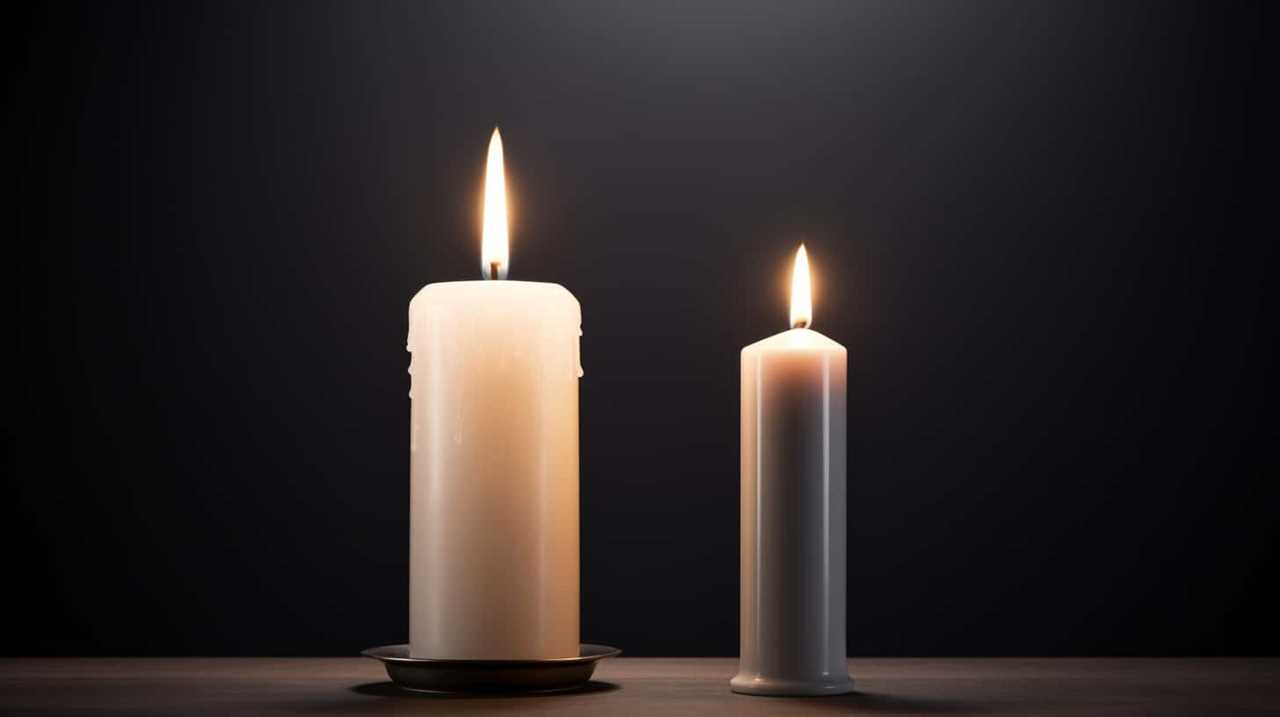
Now that we’ve our long-reach lighter or matches ready, let’s proceed to the next step and light the first wick.
Light the First Wick
Let’s talk about the points to consider when lighting the first wick of a three wick candle.
First, we’ll explore different wick lighting techniques to ensure a successful and even burn.
Next, we’ll discuss the importance of proper flame maintenance to optimize the candle’s performance and prevent any potential issues.
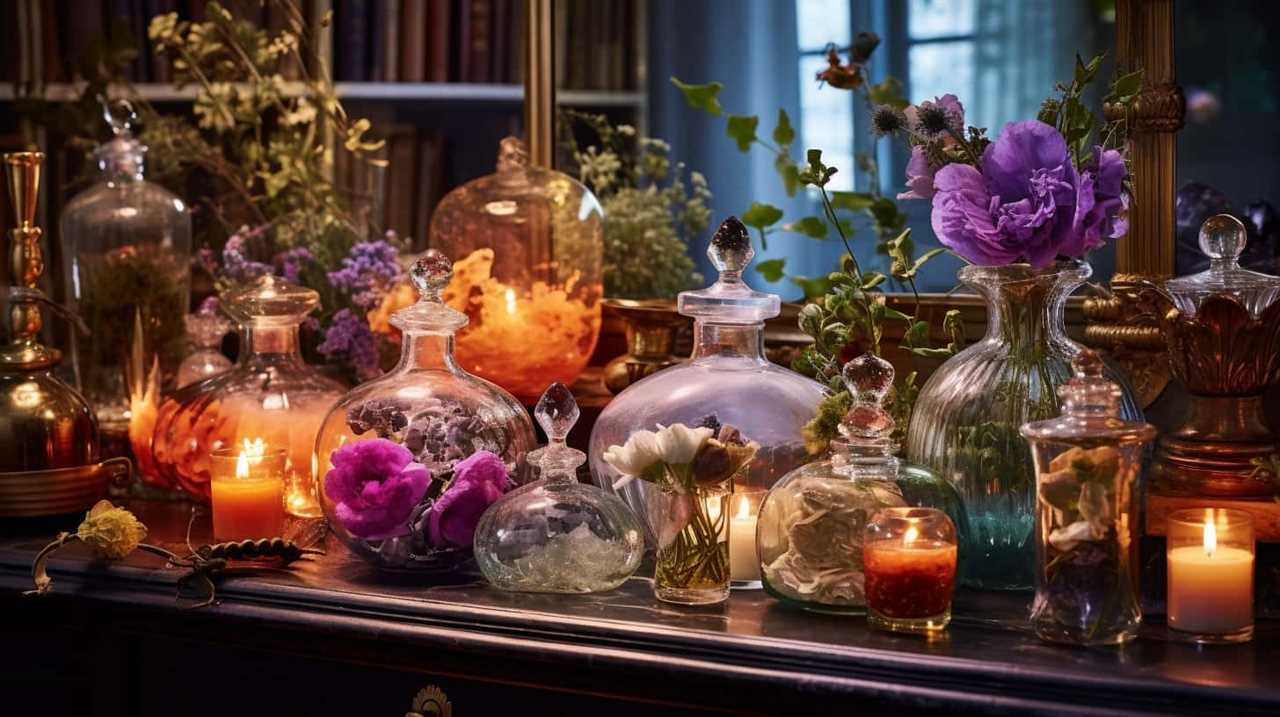
Lastly, we’ll touch on safety precautions that should be taken into account to ensure a safe and enjoyable candle lighting experience.
Wick Lighting Techniques
To light the first wick of a three wick candle, simply position a long match or lighter above the wick and ignite it. Once the flame is established, it’s important to practice proper flame maintenance to ensure a clean and even burn.
Here are some wick lighting techniques to consider:
- Hold the match or lighter steady, making sure it’s close enough to ignite the wick without touching it.
- Keep the flame steady for a few seconds to allow the wick to catch fire fully.
- Gently blow out the match or lighter and carefully remove it from the vicinity of the candle.
By following these techniques, you’ll ensure a successful start to your three wick candle experience.

Proper Flame Maintenance
Positioning a long match or lighter above the first wick and igniting it’s the initial step for proper flame maintenance when lighting a three wick candle. Once the flame is established, it’s important to ensure proper flame height control to optimize the candle’s burning time.
Maintaining an ideal flame height allows for a steady and efficient burn, resulting in a longer lasting candle. To achieve this, it’s crucial to trim the wicks to a quarter inch before each use. This prevents the flame from becoming too large and consuming the wax too quickly. By controlling the flame height, you can extend the candle’s burning time and enjoy its warm glow for longer periods.
Transitioning to the next section, let’s now discuss the safety precautions to consider when dealing with a three wick candle.
Safety Precautions to Consider
When lighting a three wick candle, we must consider safety precautions, starting with igniting the first wick. To ensure a safe and enjoyable experience, here are some important measures to take:
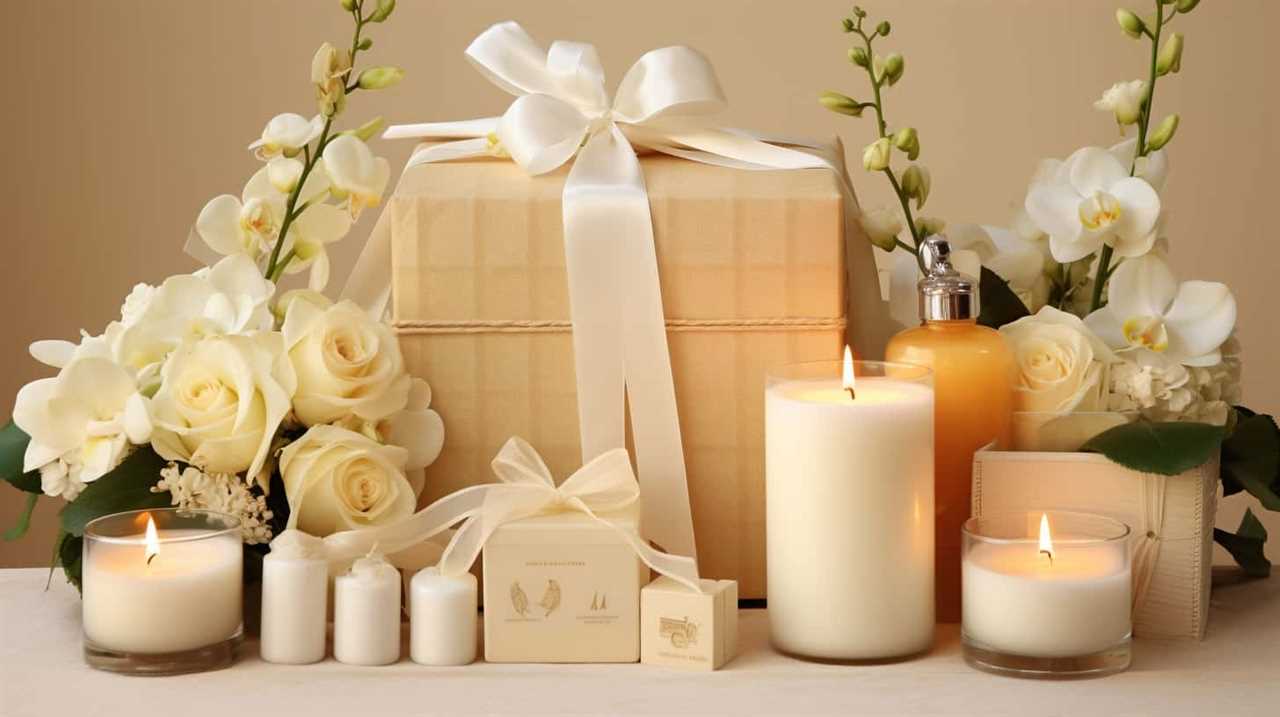
- Proper candle placement: Always place the candle on a stable and heat-resistant surface. Avoid placing it near flammable materials or in drafty areas.
- Fire extinguisher usage: It’s crucial to have a fire extinguisher nearby in case of emergencies. Familiarize yourself with its operation and keep it accessible at all times.
- Stay attentive and never leave a burning candle unattended: Keep an eye on the candle at all times and make sure to extinguish it before leaving the room or going to bed.
Move on to the Second and Third Wicks
After lighting the first wick, we can now proceed to ignite the second and third wicks using the same method. Lighting multiple wicks simultaneously not only ensures that the candle burns evenly but also enhances the aesthetics of the three wick candle. To light the remaining wicks, follow these steps:
| Step | Method |
|---|---|
| 1 | Hold the flame to the base of the second wick, slightly tilting the candle to allow the flame to catch the wick. |
| 2 | Once the second wick is lit, repeat the process for the third wick, holding the flame to its base until it catches fire. |
| 3 | Ensure that all three wicks are burning evenly and adjust the positioning if needed. |
Ensure All Wicks Are Burning Evenly
To ensure all wicks are burning evenly, we need to check that the flames are of similar height and adjust if necessary. Ensuring wick alignment is crucial for an even burn. Here’s what you can do to achieve it:
- Gently blow out the candle and let it cool for a minute.
- Carefully trim any excess wick using a wick trimmer or scissors.
- If one wick is burning higher than the others, gently press it down using a non-flammable object, such as a chopstick or a pencil.
Avoiding wick drowning is also important for an even burn. Make sure the pool of melted wax around the wicks is shallow, allowing them to burn evenly.
Monitoring the candle while it burns will help you spot any issues and make necessary adjustments to ensure a beautiful, evenly burning three wick candle.
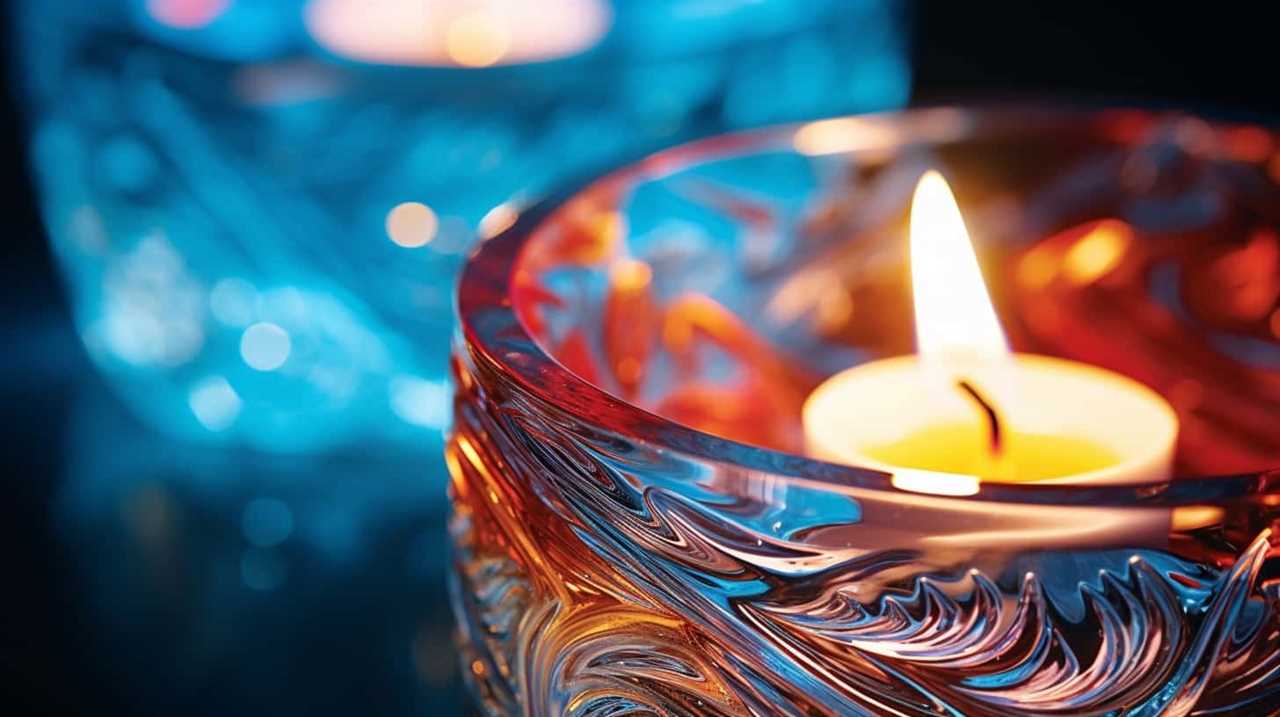
Monitor the Candle While It Burns
Now that our three wick candle is lit, it’s important to closely monitor it while it burns.
There are safety precautions that should be followed to prevent any accidental fires.
Safety Precautions for Monitoring
Throughout the burning process, we continuously monitor the three wick candle to ensure its safe usage. Proper monitoring techniques and fire prevention measures are essential to prevent accidents and ensure a pleasant candle experience.
Here are some safety precautions to keep in mind:

- Never leave the candle unattended: Always stay in the same room as the candle and avoid leaving it burning overnight or when you leave the house.
- Keep flammable objects away: Maintain a safe distance between the candle and any flammable items, such as curtains, papers, or clothing.
- Place the candle on a stable surface: Make sure the candle is placed on a heat-resistant surface that won’t easily tip over.
By following these safety precautions, you can enjoy the relaxing ambiance of your three wick candle while minimizing the risk of accidental fires.
Now, let’s move on to the next section about preventing accidental fires.
Preventing Accidental Fires
As we monitor the burning three wick candle, it’s crucial to take steps to prevent accidental fires. Candle safety should always be a top priority to ensure the well-being of our homes and loved ones.
To help you maintain a safe environment, here are some essential tips to prevent accidents:

- Never leave a burning candle unattended. Even a momentary distraction can lead to a disastrous outcome.
- Keep the candle away from flammable objects. Ensure a safe distance from curtains, papers, or any other combustible materials.
- Place the candle on a stable surface. Avoid placing it on an uneven or flammable surface that could cause it to tip over.
Extinguish the Candle Safely
To safely extinguish the three wick candle, we gently blow out the flames and ensure they’re completely extinguished. Here are some essential tips to prevent accidents and ensure a safe extinguishing process:
- Keep a safe distance: Stand at least an arm’s length away from the candle to avoid getting burned or accidentally knocking it over.
- Use a candle snuffer: If available, use a candle snuffer to extinguish the flames. This tool prevents hot wax from splattering and reduces the risk of accidental fires.
- Avoid blowing too hard: When blowing out the flames, gentle and controlled breaths are key. Blowing too hard can cause the flames to flare up and potentially spread.
Frequently Asked Questions
How Long Does a Three Wick Candle Typically Burn For?
The burning time of a three wick candle can vary depending on several factors. These factors include the quality of the wax, the size of the candle, and the environment in which it is burned.
Can I Use Regular Household Matches to Light a Three Wick Candle?
Yes, you can use regular household matches to light a three wick candle. However, it’s important to follow safety precautions. Always ignite the match away from your body and hold it steady to avoid any accidents.
Can I Leave a Three Wick Candle Unattended While It Burns?
We recommend not leaving a three wick candle unattended while it burns for reasons of candle safety. It’s crucial to follow these tips for burning a three wick candle to ensure a safe and enjoyable experience.
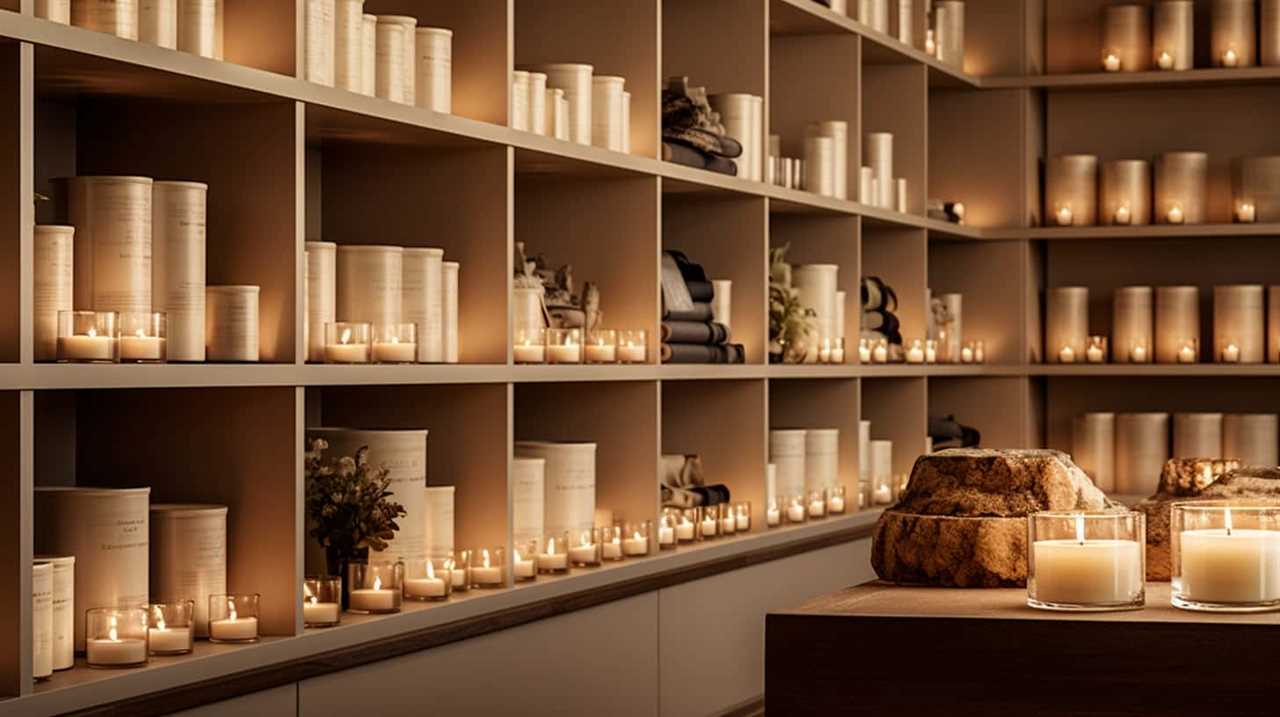
How Do I Prevent the Wicks From Getting Too Long and Causing the Flame to Flicker or Smoke?
To prevent wick issues and ensure a smooth burn, we’ll share some candle maintenance tips. Trim the wicks to a quarter inch before lighting, avoiding flickering and smoking. This simple act ensures a perfect ambiance every time.
What Should I Do if the Three Wick Candle Produces a Large Amount of Soot While Burning?
If a three wick candle produces excessive soot, it’s important to address the issue promptly. To prevent soot buildup, ensure the wicks are properly trimmed and the candle is placed in a draft-free area. Regularly clean the candle to maintain its performance. Candle safety is crucial for a safe and enjoyable experience.
Conclusion
In conclusion, lighting a three wick candle is a simple and enjoyable process. By following the steps outlined, you can ensure a safe and even burn.
While some may worry about the upkeep of multiple wicks, rest assured that with proper monitoring, your candle will provide a beautiful and relaxing ambiance.
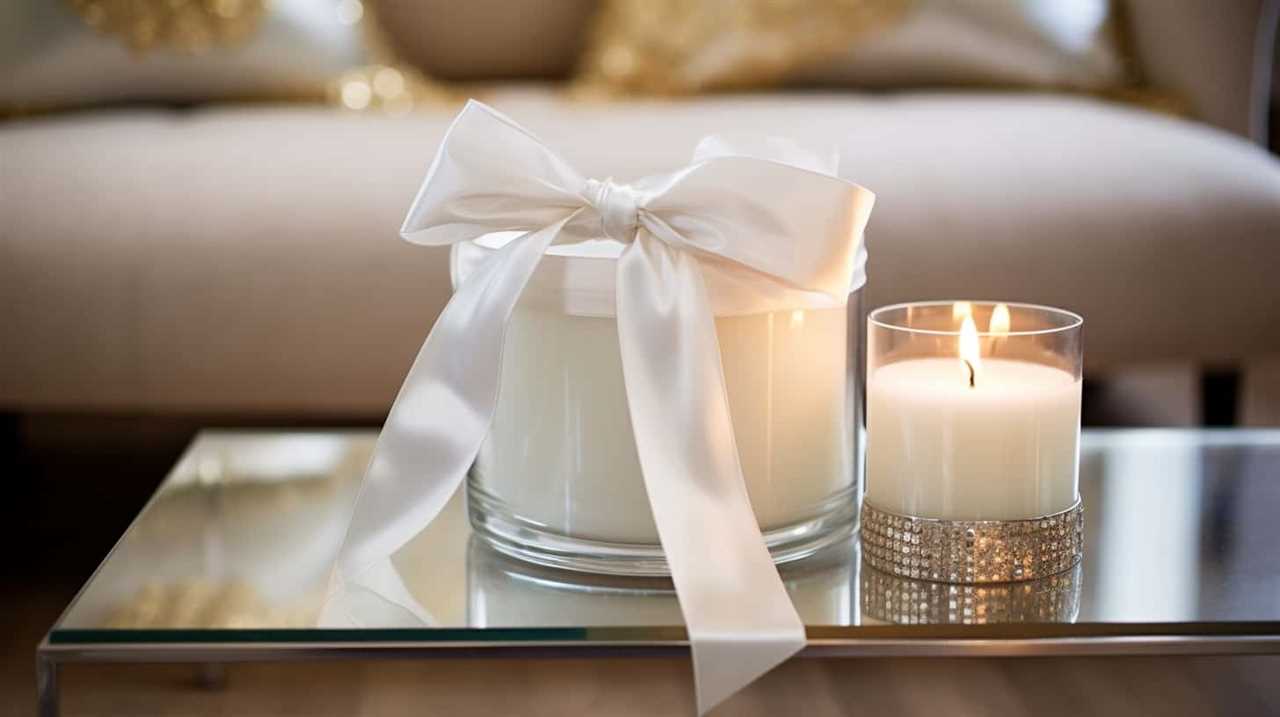
So go ahead and light up your space with confidence, knowing that you have the skills to light a three wick candle like a pro.
I’m Jane and I love candles. I have candles everywhere in my house–in every room, on every surface. I love the smell of candles, and I love how they make my place feel warm and cozy.
Candles are really important to me. They help me relax and de-stress after a long day. They remind me of happy memories, and they make me feel calm and peaceful. I can’t imagine my life without candles!
Candles
What Is a Tapered Candle

Have you ever noticed the captivating glow of a slim candle? Let us illuminate you on these remarkable creations.
Tapered candles are not just ordinary candles; they are a symbol of elegance and sophistication. With their slender and graceful form, they effortlessly transform any occasion into a magical experience.
We, as candle enthusiasts, are passionate about sharing our knowledge and expertise on all things tapered candles. In this guide, we will explore the history, characteristics, types, and even creative uses for tapered candles.
We will also provide valuable tips on how to properly burn and care for these exquisite candles.

So, join us on this illuminating journey and discover the enchantment of tapered candles.
Key Takeaways
- Tapered candles have a long history, dating back thousands of years, and became popular in the 18th century.
- They come in various shapes, sizes, and colors, making them a versatile and popular choice for special events and occasions.
- The type of wax and wick used can impact burn time and quality, with beeswax offering a clean-burning flame and paraffin having a shorter burn time.
- Tapered candles can serve as both decorative and functional elements in home decor, adding elegance and sophistication to any room.
History of Tapered Candles
We will now explore the history of tapered candles.
The history of candle making dates back thousands of years, with evidence of early candle-like objects found in ancient Egyptian tombs. However, it wasn’t until the Middle Ages that the production of candles became more widespread.
During this time, candles were primarily made from animal fat or beeswax. The evolution of candle shapes began with simple cylindrical forms, but as time went on, candle makers started to experiment with different shapes and sizes.

Tapered candles, with their distinctive conical shape, became popular in the 18th century. These elegant candles were often used in formal settings and added a touch of sophistication to any occasion.
Today, tapered candles continue to be a beloved choice for those who desire to create a warm and welcoming atmosphere.
Characteristics of Tapered Candles
Tapered candles come in a variety of shapes, ranging from straight and cylindrical to elegant and curvy. These different shapes allow for a range of decorative options, making them a popular choice for special events and occasions.
Additionally, the burning time of tapered candles can vary depending on factors such as size and wax composition, providing flexibility for different lighting needs.
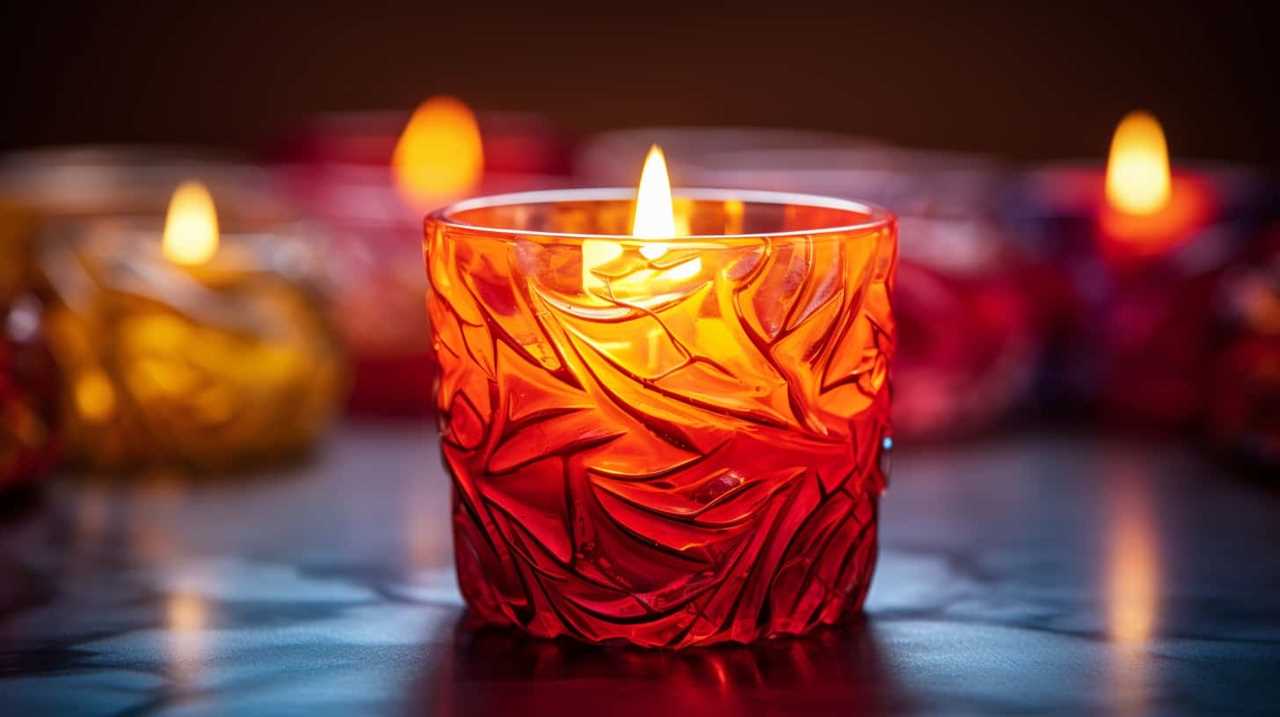
Tapered Candle Shapes
Discussing the shapes of tapered candles, we will explore their distinct characteristics. Tapered candles come in various shapes, each with its own unique style and purpose. To help you understand these shapes better, let’s take a look at the table below:
| Shape | Description |
|---|---|
| Standard | A classic shape that narrows gradually from the base to the tip, fitting most candlestick holders. |
| Spiral | These candles feature a spiral design, adding an elegant touch to any candle arrangement. |
| Twisted | With a twisted design, these candles create a visually interesting and dynamic centerpiece. |
These different shapes give tapered candles versatility and allow them to fit into various candlestick holders or taper candle holders. Whether you’re looking to create a romantic ambiance or add a touch of sophistication to your space, tapered candles in different shapes can help you achieve your desired aesthetic.
Candle Burning Time
As we delve into the characteristics of tapered candles, it’s important to consider their candle burning time. The burning time of tapered candles can vary depending on several factors, including the size, quality, and burning techniques used.
Here are some key points to keep in mind when it comes to candle burning time:

- Proper wick trimming: Trimming the wick to about ¼ inch before lighting the candle can help to maximize its burning time.
- Avoiding drafts: Placing the candle in a draft-free area can prevent it from burning faster than usual.
- Using candle accessories: Candle accessories like candle snuffers can help extinguish the flame without causing excess smoke or wax splatter.
By implementing these candle burning techniques and maximizing the lifespan of tapered candles, you can enjoy their warm glow for a longer period.
Now, let’s move on to discussing the different types of tapered candles.
Different Types of Tapered Candles
When it comes to different types of tapered candles, there are a few key points to consider.
First, the wax and wick used can impact the burn time and quality of the candle.
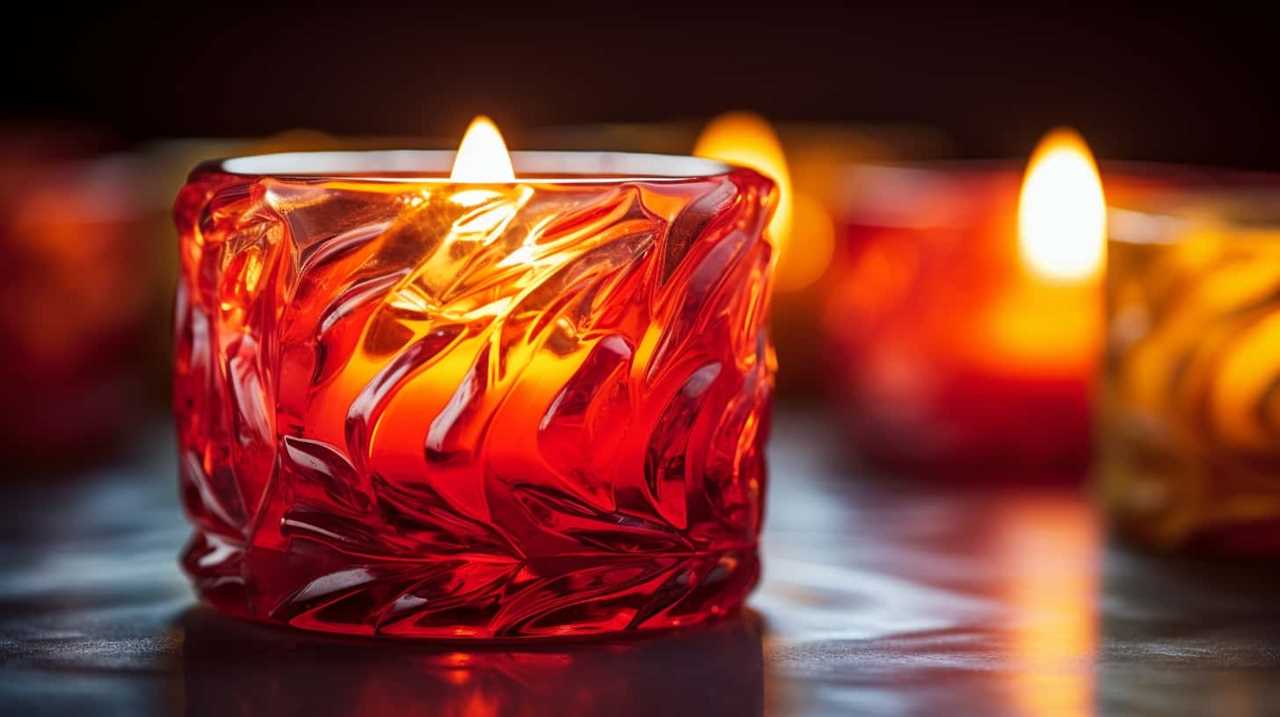
Second, the colors and sizes available offer a wide range of options to suit different preferences and occasions.
Lastly, tapered candles can serve both decorative and functional purposes, making them versatile for various settings.
Wax and Wick
We will now explore the various types of wax and wick used in tapered candles.
When it comes to wax types, there are a few common options to consider:
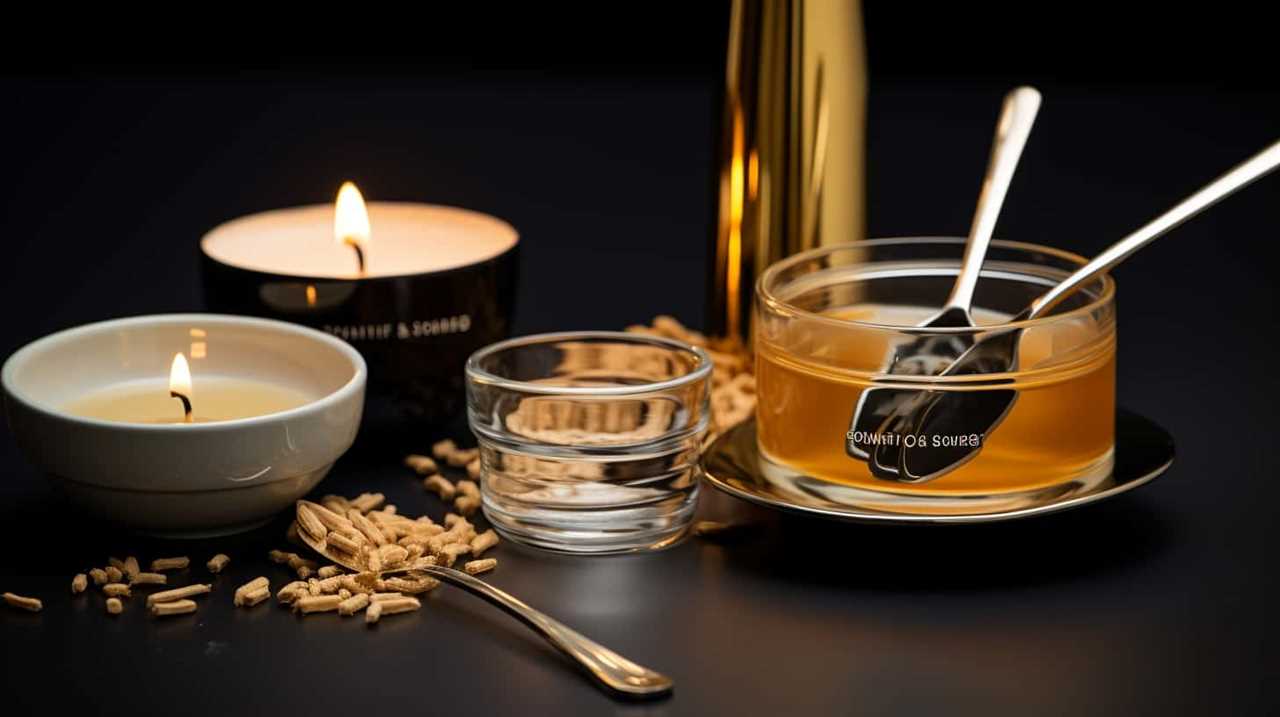
- Beeswax: This natural wax is known for its sweet, honey-like scent and clean-burning properties. It produces a warm, golden flame that adds a touch of elegance to any setting.
- Paraffin: This widely available wax is derived from petroleum and is commonly used in mass-produced candles. It offers a wide range of colors and scents, but it tends to produce more soot and has a shorter burn time compared to other wax types.
Now let’s move on to the wick materials:
- Cotton: This is the most commonly used wick material. It’s known for its clean burn and minimal smoke. It provides a steady flame and is suitable for most taper candles.
- Wooden wicks: These wicks add a unique touch to tapered candles. They create a soothing crackling sound reminiscent of a fireplace, enhancing the ambiance and creating a cozy atmosphere.
Colors and Sizes
Tapered candles come in a wide variety of colors and sizes to suit different preferences and occasions. When it comes to candle colors, you can find everything from classic white and ivory to vibrant reds, blues, and greens. There are also pastel shades like pink, lavender, and mint for a softer and more romantic ambiance.
As for candle sizes, they range from shorter taper candles that are around 6 inches in height to longer ones that can reach up to 18 inches or more. Some tapered candles also come in different diameters, allowing you to choose a size that fits perfectly in your candle holders.
With such a diverse range of colors and sizes available, you can easily find the perfect tapered candles to complement your decor or set the mood for any occasion.

Decorative or Functional?
Our tapered candles can serve both a decorative and functional purpose in your home. They aren’t only beautiful to look at but also provide a warm and inviting ambiance.
Here are two ways our taper candles can enhance your space:
- Decorative: When placed in candlestick holders, tapered candles can become the centerpiece of any table setting or mantelpiece. They come in various colors and sizes, allowing you to match them with your home decor and create a visually appealing display. The flickering flame adds an element of elegance and sophistication to any room.
- Functional: Taper candles aren’t just for show; they also provide a practical lighting solution. In the event of a power outage or during a cozy evening at home, having taper candle holders with lit tapered candles can create a soothing and intimate atmosphere. They can be used as emergency lighting or for creating a calming ambiance during a relaxing bath or dinner.
Incorporating our taper candles into your home decor can bring both beauty and functionality to your space.
How Tapered Candles Are Made
To create tapered candles, craftsmen carefully shape and mold wax into slender forms using specialized tools and techniques.

The candle making process begins with melting the wax, which can be made from various materials such as beeswax, paraffin, or a blend of both.
Once the wax is melted, it’s poured into a mold specifically designed for tapered candles. The mold is usually made of metal and has a conical shape.
The wax is left to cool and harden, and once it reaches the right consistency, the mold is removed, revealing the beautifully tapered candle.
The craftsmen then trim the wick and polish the candle to give it a smooth and elegant finish.

Now, let’s explore the popular materials used for tapered candles.
Popular Materials Used for Tapered Candles
We will now explore the different popular materials used for creating tapered candles. When it comes to the candle making process, there are various types of waxes that are commonly used. Here are two sub-lists to help you understand the options available:
- Natural Waxes:
- Beeswax: This traditional choice is known for its natural sweet scent and clean burn. It also emits negative ions that can purify the air.
- Soy Wax: Made from soybean oil, this renewable resource is eco-friendly and produces a slow, clean burn. It’s also known for holding fragrance well.
- Paraffin-based Waxes:
- Paraffin Wax: This widely used wax is affordable and has good scent throw. However, it isn’t eco-friendly as it’s derived from petroleum.
- Palm Wax: A sustainable alternative to paraffin, palm wax is made from palm oil. It has a unique crystalline appearance and excellent burn quality.
The Meaning and Symbolism of Tapered Candles
Tapered candles hold significant meaning and symbolism in various cultures and traditions. Throughout history, these candles have been used for religious, ceremonial, and decorative purposes.
The history of taper candles dates back to ancient times, where they were predominantly made from beeswax or animal fat. The shape of tapered candles, with a wider base and a narrow tip, allows for a slow and even burn. This shape isn’t only practical but also carries symbolic significance.

The gradual decrease in size represents the journey of light, from darkness to illumination. In addition to the traditional long and slim shape, tapered candles can also be found in various other shapes, such as spiral or twisted designs. These unique shapes add an artistic element to the candles and enhance their symbolic meaning.
With their rich history and diverse shapes, tapered candles bring a sense of tradition, spirituality, and beauty to any space. Transitioning into the next section, let’s explore how these candles can be incorporated into home decor.
Tapered Candles in Home Decor
How can tapered candles enhance the ambiance of our homes?
Tapered candles aren’t only a functional source of light but also a beautiful decorative element that can transform any space. Here are some decorating ideas to inspire you:
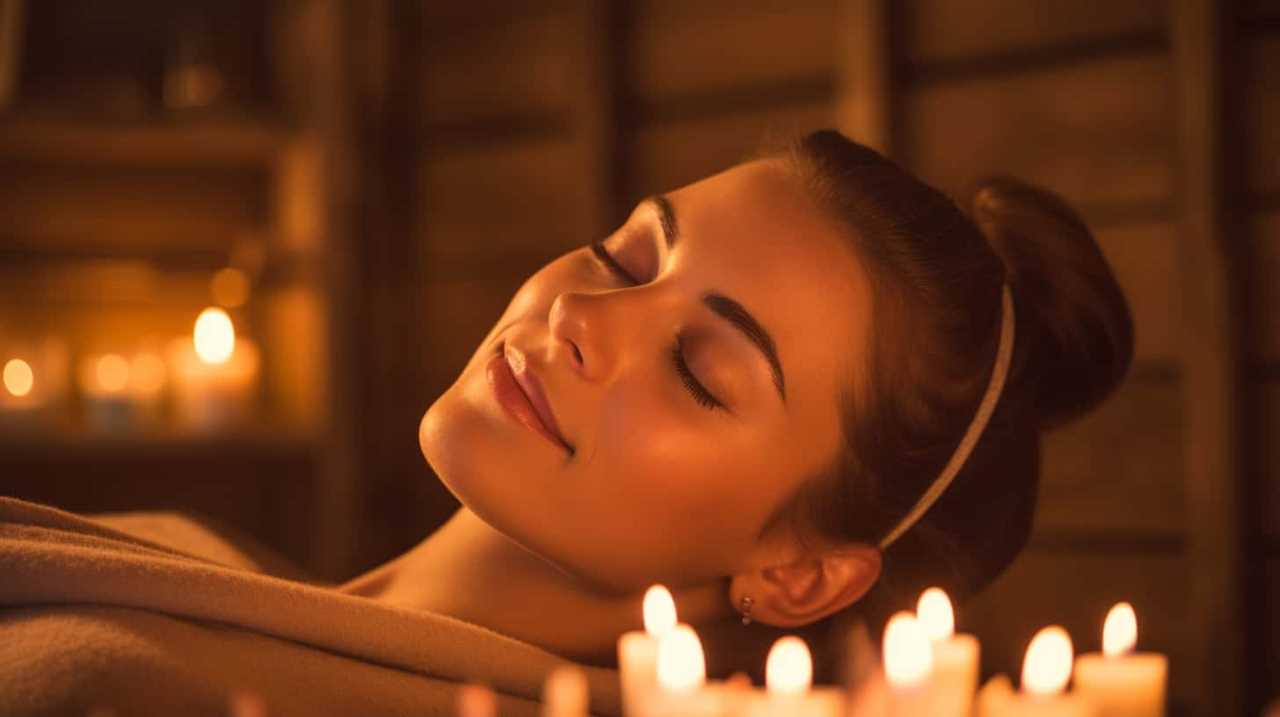
- Create a centerpiece on your dining table by placing a group of tapered candles in different heights in elegant taper candle holders. The soft glow of the candles will add a romantic and intimate atmosphere to your meals.
- Use tapered candles to create a cozy and inviting atmosphere in your living room. Place them on a mantel or coffee table, and let their flickering light create a warm and relaxing ambiance.
- Incorporate tapered candles in your bathroom decor for a spa-like experience. Place them around the bathtub or on a vanity tray to create a serene and soothing atmosphere.
By incorporating tapered candles into your home decor, you can create a warm and inviting space that promotes relaxation and comfort.
Now let’s explore how tapered candles can elevate special occasions.
Tapered Candles for Special Occasions
When it comes to special occasions, tapered candles are a timeless choice. These candles come in a variety of shapes, sizes, and colors, allowing you to find the perfect match for your event.
Whether you’re decorating a wedding reception, setting the mood for a romantic dinner, or celebrating a milestone birthday, tapered candles add a touch of elegance and sophistication to any occasion.
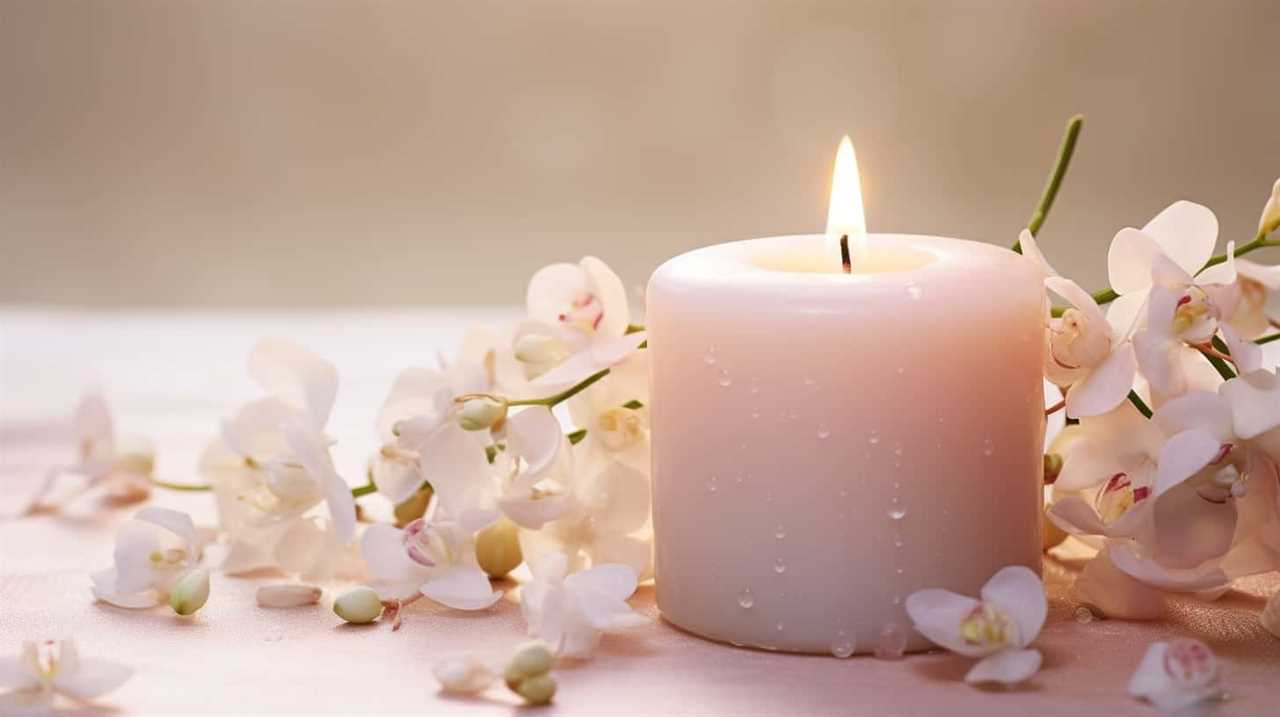
Tapered Candle Varieties
For special occasions, we prefer to use a variety of tapered candles. When it comes to choosing the perfect candles for these moments, there are a few options to consider.
• Decorative vs. Plain Tapered Candles:
- Decorative tapered candles add an elegant touch to any event. They come in various colors and designs, allowing you to match them with your decor and create a cohesive look.
- Plain tapered candles, on the other hand, offer simplicity and understated beauty. They’re perfect for minimalist or classic settings, where their clean lines and smooth texture can enhance the ambiance.
• Scented Tapered Candles:
- Scented tapered candles add another layer of sensory delight to your special occasion. With a wide range of fragrances available, you can choose one that complements the theme or evokes a particular mood.
Whether you opt for decorative or plain tapered candles, or prefer the added scent of scented varieties, these candles will undoubtedly enhance the atmosphere and create a memorable experience for your guests.

Decorating With Tapered Candles
We typically use a variety of tapered candles when decorating for special occasions, including weddings, parties, and celebrations. Tapered candles are a versatile choice for decoration due to their elegant and sleek design. They come in various lengths, colors, and scents to suit different decorating styles.
When it comes to displaying tapered candles, there are numerous options for candle holders available. You can opt for classic and simple holders made of glass or metal, or choose more elaborate and decorative ones to enhance the ambiance. Candle holders can be placed individually or arranged in clusters to create a stunning centerpiece.
The flickering flame of tapered candles adds a warm and inviting atmosphere to any special occasion, making them a popular choice for decoration.
Now, let’s explore the symbolism of tapered candles.
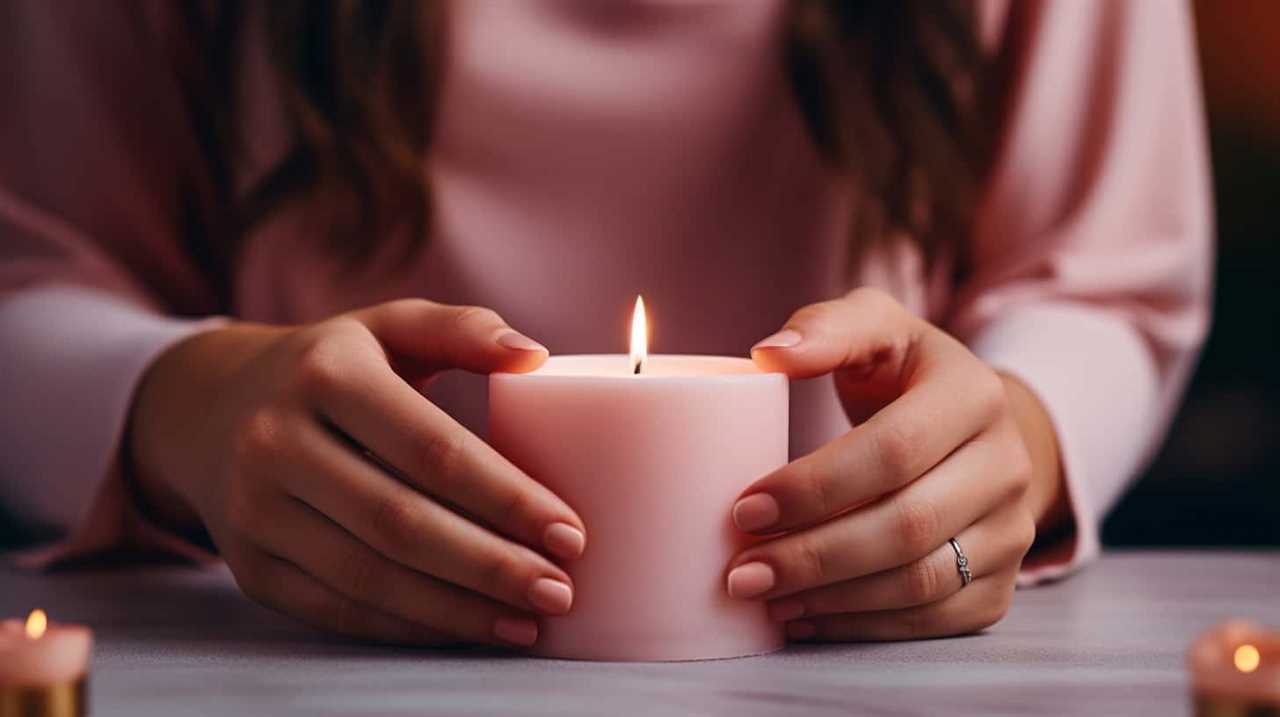
Symbolism of Tapered Candles
During special occasions, we often use tapered candles to enhance the ambiance and create a warm and inviting atmosphere. These candles hold great symbolism and significance, adding depth and meaning to our celebrations.
Here is what makes tapered candles special:
- Elegance and Sophistication: Tapered candles symbolize elegance and sophistication, elevating any event or gathering to a higher level of refinement.
- Unity and Togetherness: The act of lighting tapered candles represents unity and togetherness, as the flame from one candle can be used to ignite others, symbolizing the sharing of light and love.
- Special Moments: Tapered candles are often used during special moments like weddings, anniversaries, and religious ceremonies, symbolizing the sacredness and significance of these occasions.
- Hope and Renewal: The gentle flickering flame of a tapered candle signifies hope and renewal, reminding us to stay positive and embrace new beginnings.
Tips for Decorating With Tapered Candles
When decorating with tapered candles, it’s important to consider the size and color of the candles to create an elegant and cohesive look.
To start, consider the height of the candle in relation to the surrounding decor. If you have high ceilings or tall centerpieces, longer tapered candles can create a dramatic effect. On the other hand, shorter candles work well for low-profile arrangements.
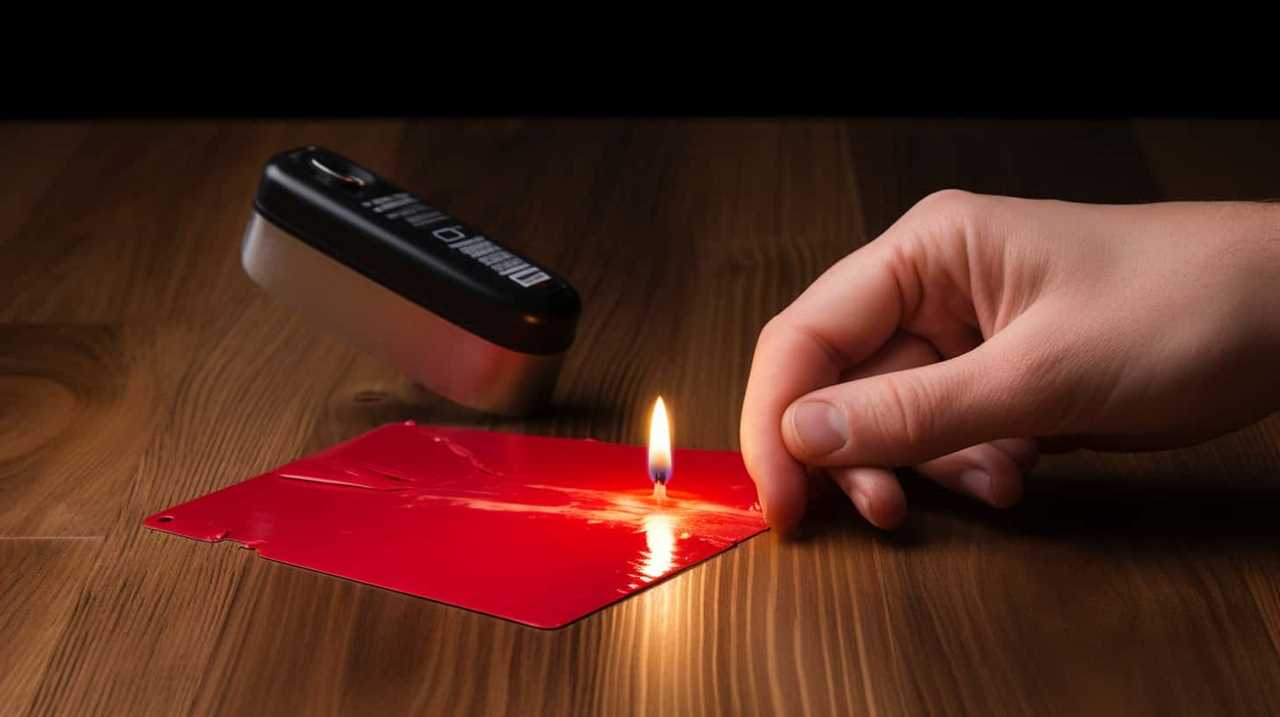
Additionally, think about the color of the candles. White or ivory candles are classic and versatile, while colored candles can add a pop of color and complement a specific theme or color scheme.
To display your tapered candles, consider using candlestick holders. These holders come in a variety of styles and materials, such as metal, glass, or ceramic, allowing you to find the perfect match for your decor.
Benefits of Using Tapered Candles
Using tapered candles as a centerpiece adds an elegant touch to any table setting. Their slim and elongated shape creates a visually stunning display, especially when placed in a candlestick holder.
Additionally, tapered candles are incredibly versatile and can be used for any occasion, whether it’s a formal dinner party or a cozy night in. Not only do they enhance the ambiance with their warm and flickering glow, but they also provide a practical source of lighting.
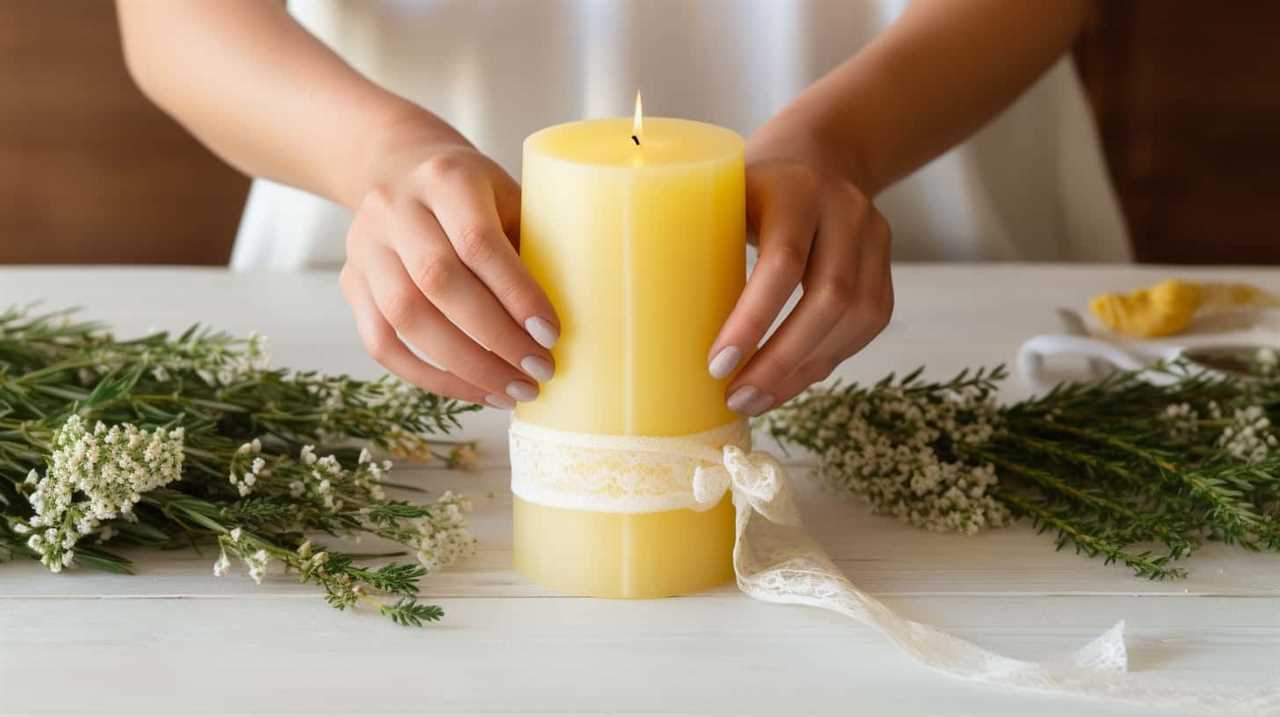
Elegant Candlestick Centerpiece
We prefer using tapered candles for our elegant candlestick centerpiece because they create a sophisticated and refined ambiance. Tapered candles add an elegant touch to any home decor, making them the perfect choice for creating a stunning centerpiece.
Here are some benefits of using tapered candles for your elegant candlestick centerpiece:
- Enhances the Atmosphere: The soft, flickering glow of tapered candles creates a warm and inviting atmosphere, perfect for intimate gatherings or romantic dinners.
- Adds Height and Drama: Tapered candles come in various lengths, allowing you to create a visually striking centerpiece with varying heights and sizes, adding drama and interest to your table setting.
- Creates a Sense of Grandeur: The tall and slender shape of tapered candles exudes elegance and sophistication, making them a popular choice for formal occasions and special events.
- Brings Focus to the Table: Placing tapered candles in candlestick holders draws attention to the centerpiece, making it the focal point of your table decor.
With their timeless beauty and ability to transform any space, tapered candles are a perfect choice for creating an elegant candlestick centerpiece that will impress your guests and elevate your home decor.
Versatile for Any Occasion
Tapered candles offer versatility for any occasion, enhancing the ambiance with their elegant glow and creating a captivating centerpiece for your table. These candles are a must-have in home decor, as they can be used in a variety of settings and events. Whether you’re hosting a formal dinner party or enjoying a cozy evening at home, tapered candles add a touch of sophistication and warmth to your surroundings.

Here are some different occasions where tapered candles can be used:
| Occasion | Description |
|---|---|
| Dinner Parties | Create an intimate and romantic atmosphere for your guests. |
| Weddings | Add an elegant and timeless element to your wedding decor. |
| Holidays | Enhance the festive spirit with the soft glow of tapereds. |
| Birthdays | Celebrate milestones with candles that make a statement. |
| Relaxation | Unwind and create a serene environment for self-care nights. |
No matter the occasion, tapered candles are a versatile choice that can elevate the atmosphere and create a memorable experience for you and your guests.
Provides Ambient Lighting
When using tapered candles, the soft and warm ambiance they create adds a touch of elegance to any setting. The gentle flickering of the flame creates a cozy and intimate atmosphere, perfect for romantic dinners or relaxing evenings at home.
Tapered candles can be placed in various candle holders, allowing you to customize the lighting to suit your taste and decor. The ambient lighting provided by tapered candles can help create a calming and soothing environment, making them ideal for meditation or unwinding after a long day.
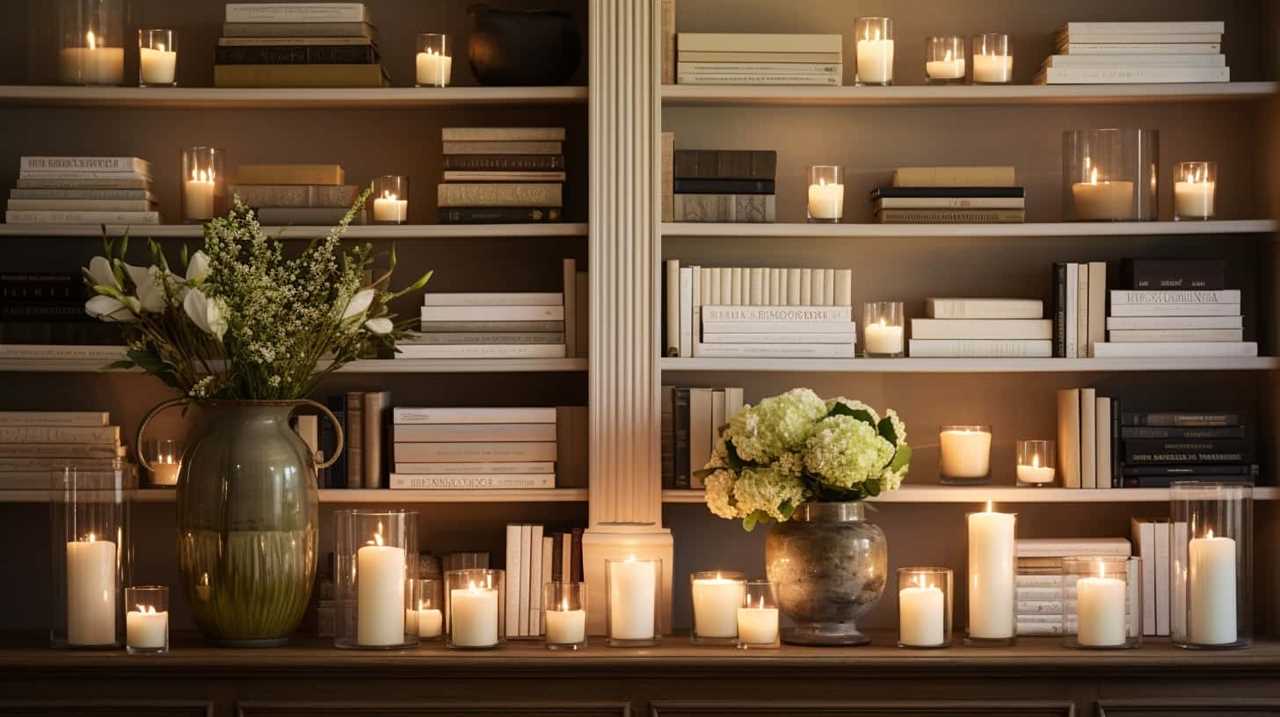
Additionally, the soft glow of the candles can enhance the beauty of your surroundings, highlighting the intricate details of your furniture and adding a warm glow to your space.
As we explore the benefits of using tapered candles, it’s important to understand how to properly burn them to ensure safety and maximize their lifespan.
How to Properly Burn Tapered Candles
To burn tapered candles properly, it’s important to follow a few key steps.
First, always trim the wick to about 1/4 inch before lighting the candle. This helps prevent excessive smoke and ensures a clean, even burn.

Next, place the candle in a sturdy holder to prevent it from tipping over. It’s also important to burn tapered candles on a heat-resistant surface, away from any flammable materials.
Before lighting the candle, make sure there are no drafts in the room, as this can cause uneven burning.
Once lit, allow the candle to burn for at least one hour, or until the wax has melted evenly across the entire surface.
Remember to never leave a burning candle unattended and always keep it out of reach of children and pets.
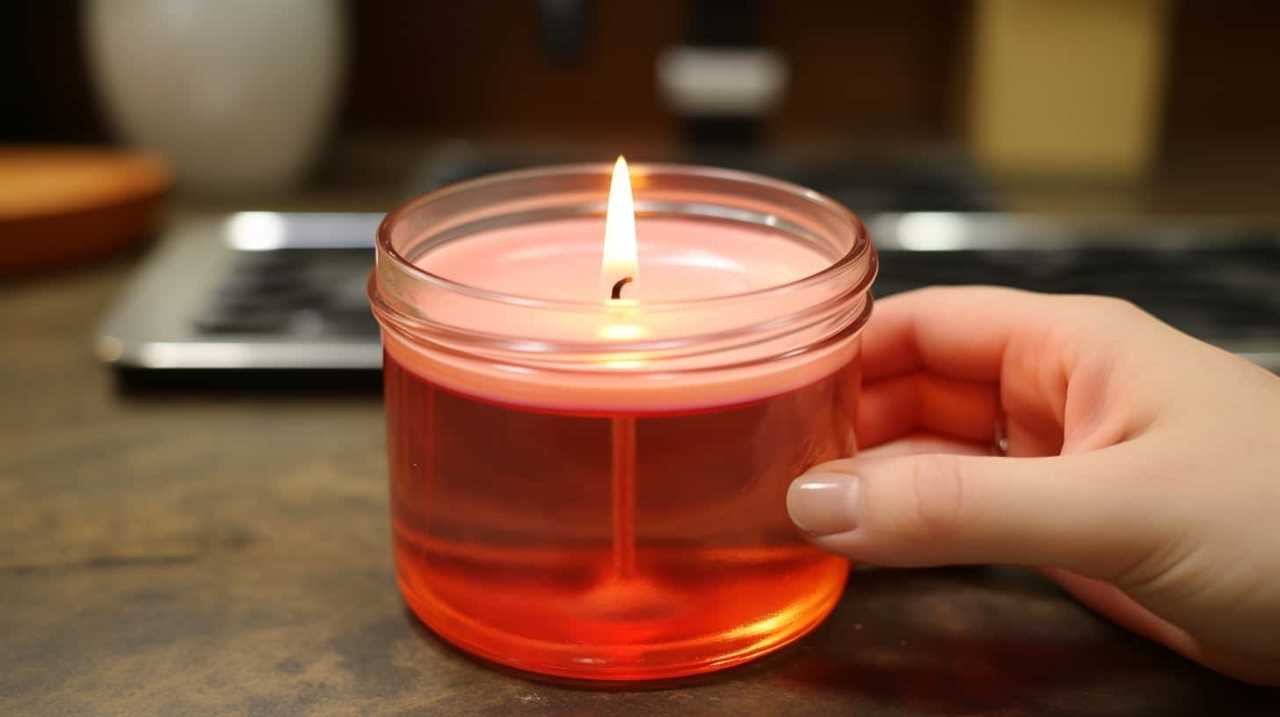
Caring for Tapered Candles
Taking proper care of tapered candles is essential for maintaining their quality and ensuring a longer lifespan. To ensure your candles stay in pristine condition, here are some candle care tips that will help prevent candle drips:
- Trim the wick: Before each use, ensure the wick is trimmed to about 1/4 inch. This will help prevent excessive dripping and uneven burning.
- Place in a draft-free area: Avoid placing tapered candles in areas with drafts as it can cause the flame to flicker and increase the chances of drips.
- Use a candle drip catcher: Consider using a drip catcher to collect any excess wax and prevent it from dripping onto your surfaces.
By following these candle care practices, you can enjoy the beauty of tapered candles without worrying about messy drips.
Now, let’s explore some creative uses for tapered candles to add a touch of elegance to your space.
Creative Uses for Tapered Candles
As we explore the creative uses for tapered candles, it’s important to consider the various ways in which they can enhance the ambiance of any space.

Tapered candle arrangements can be a beautiful centerpiece for a dining table, adding a touch of elegance to any meal. They can also be used to create a romantic atmosphere in a bedroom or a cozy feel in a living room.
To showcase these versatile candles, unique tapered candle holders can be used. These holders come in various shapes and designs, allowing for endless creativity and personalization. Whether it’s a sleek metal holder or a whimsical ceramic one, the right holder can elevate the beauty of a tapered candle.
Now that we’ve explored the creative uses for tapered candles, let’s move on to where you can find them.
Where to Buy Tapered Candles
We found three reliable online retailers where you can buy tapered candles. These retailers offer a variety of buying options and carry some of the best brands in the market. Here are the options we recommend:

- Candle Delights: This online retailer offers a wide range of tapered candles in different sizes, colors, and scents. They prioritize customer satisfaction and provide detailed product descriptions to help you make the right choice. Their prices are competitive, and they often have special promotions and discounts.
- The Candle Emporium: Known for their high-quality products, The Candle Emporium is a great place to find premium tapered candles. They’ve a wide selection of brands and styles, ensuring you’ll find exactly what you need. With their easy-to-navigate website and excellent customer service, your buying experience will be smooth and enjoyable.
Frequently Asked Questions
How Long Do Tapered Candles Typically Burn For?
Tapered candles typically burn for several hours, depending on the size and quality of the wax. Factors such as wax density and wick thickness can affect burn time. It’s important to choose candles made from high-quality wax for longer-lasting enjoyment.
Are Tapered Candles Safe to Use in Outdoor Settings?
Outdoor safety precautions should be taken when using tapered candles. They provide a charming ambiance and are ideal for outdoor settings. However, ensure they are placed in stable holders to prevent accidents or damage from wind.
Can Tapered Candles Be Used as Emergency Lighting?
Tapered candles can serve as emergency lighting due to their long burn time and steady flame. They provide an alternative source of light during power outages or outdoor emergencies. The benefits include their portability, affordability, and ability to create a calming ambiance.
Are There Any Specific Storage Requirements for Tapered Candles?
When it comes to storing tapered candles, it’s important to consider the proper storage conditions. Keeping them in a cool, dry place, away from direct sunlight, will help preserve their quality and prevent any melting mishaps.
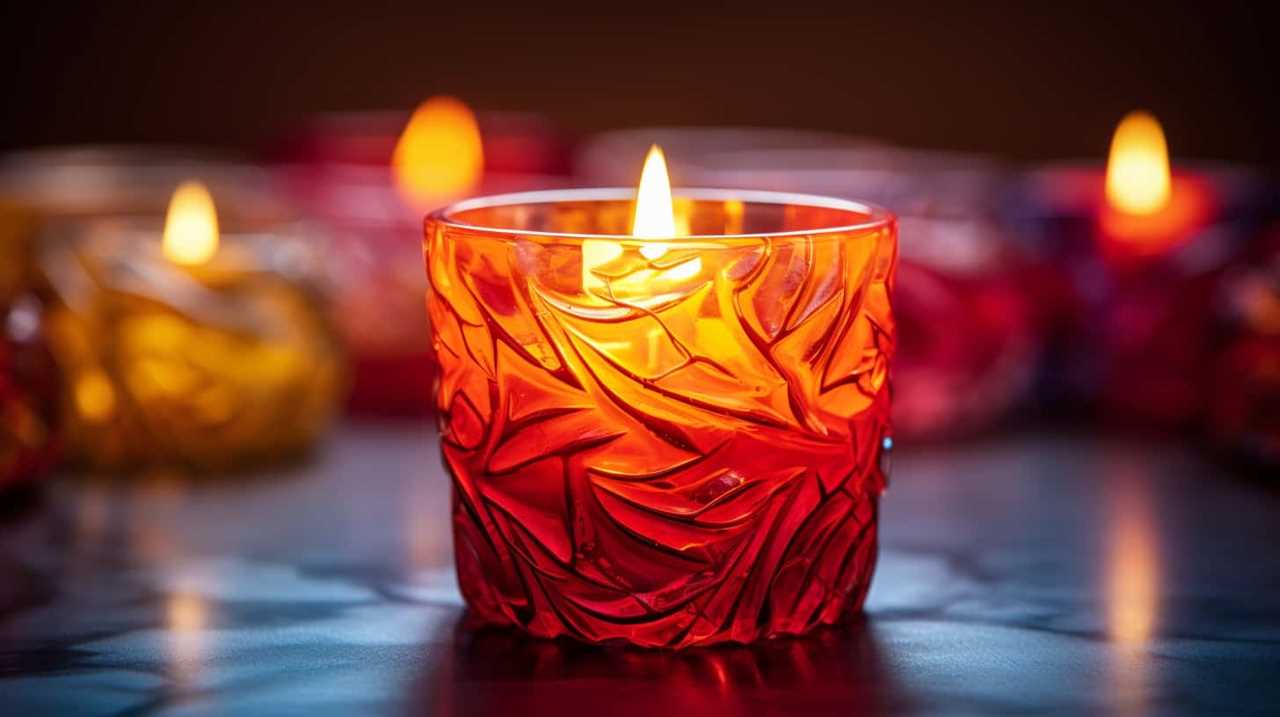
Can Tapered Candles Be Used in Religious Ceremonies or Rituals?
In religious ceremonies, tapered candles hold cultural significance. They are used to symbolize various elements and carry out specific rituals. Their flickering flames create an ambiance of reverence and spirituality, enhancing the overall experience for worshippers.
Conclusion
In conclusion, tapered candles aren’t just ordinary candles; they’re elegant and sophisticated additions to any space. Their slender and gradually narrowing shape adds visual appeal and creates a sense of grace and poise.
Whether used for decoration, ambiance, or rituals, tapered candles bring a touch of timeless beauty and romance.
So, next time you’re looking to create a warm and enchanting atmosphere, consider adding some tapered candles to your collection.

I’m Jane and I love candles. I have candles everywhere in my house–in every room, on every surface. I love the smell of candles, and I love how they make my place feel warm and cozy.
Candles are really important to me. They help me relax and de-stress after a long day. They remind me of happy memories, and they make me feel calm and peaceful. I can’t imagine my life without candles!
Candles
What Is Candle Power

Have you ever thought about the enchanting glow given off by a basic candle? It’s fascinating to witness how a small flame can light up a room, providing both warmth and light.
At our service, we believe in understanding the power behind every flicker, and that’s why we’re here to shed light on the concept of candle power.
Candle power, in simple terms, refers to the brightness of a candle. But it’s more than just a measure of illumination; it’s a beacon of comfort, ambiance, and guidance.
In this guide, we’ll explore the historical origins, scientific measurements, and practical applications of candle power.
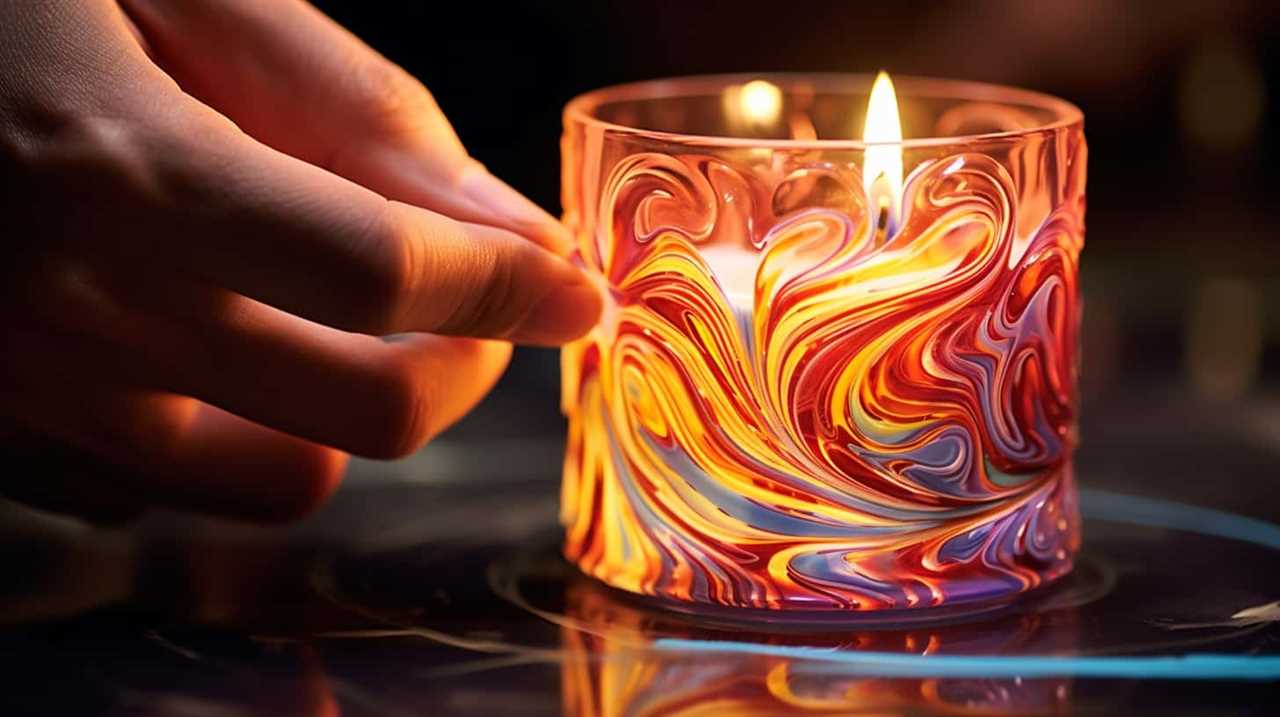
So, let’s embark on this enlightening journey together and uncover the secrets behind the captivating world of candle power.
Key Takeaways
- Candle power is a measurement unit that quantifies the brightness of a light source, allowing for comparisons between different light sources.
- It is used to determine the intensity of light emitted by a candle or any other artificial light source, and understanding candle power helps in providing adequate lighting for various tasks and environments.
- Factors affecting candle power include the wattage of the light source, the distance from the source, and obstructions or reflections in the environment.
- Candle power played a crucial role in the development of electric lighting, influenced architectural design and artistic expression, and continues to be important in various practical applications such as photography and automotive lighting systems.
The Definition of Candle Power
Candle power is a measurement unit that quantifies the brightness of a light source. It’s used to determine the intensity of light emitted by a candle or any other artificial light source. Candle power units, also known as candela, are the standard metric used to measure the luminous intensity of a light bulb or lamp.
The candle power measurement allows us to compare the brightness of different light sources and choose the most suitable one for our needs. By understanding the candle power of a light source, we can ensure that we provide adequate lighting for various tasks and environments.
Now that we’ve covered the definition of candle power, let’s move on to the historical origins of this measurement unit.
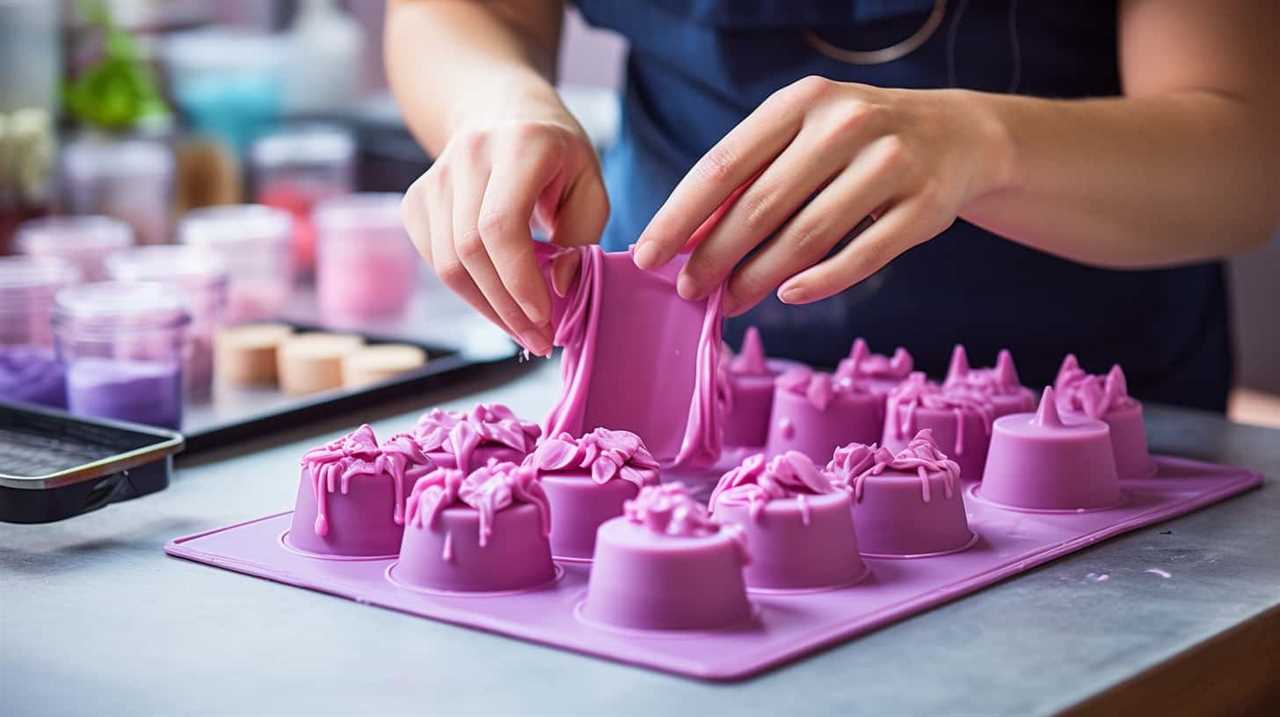
Historical Origins of Candle Power
Continuing from our previous discussion on the definition of candle power, let’s delve into the historical origins of this measurement unit. Understanding the invention timeline and cultural significance of candle power can provide valuable insights into its development and usage.
- Invention Timeline:
- 1838: Scottish inventor James David Forbes introduced the concept of candle power as a measure of light intensity.
- 1860s: British physicist Sir William Thomson (Lord Kelvin) refined the measurement by using a standard sperm candle.
- 1893: The International Commission on Illumination (CIE) established the formal definition of candle power.
- Cultural Significance:
- Candle power allowed for standardized measurement of light sources, enabling accurate comparisons and advancements in lighting technology.
- It played a crucial role in the development of electric lighting, as candle power measurements provided a benchmark for brightness.
- Candle power measurements also influenced architectural design and created new possibilities for artistic expression through lighting.
Understanding the historical origins of candle power helps us appreciate the progress made in lighting technology and its impact on various aspects of our lives.
How Candle Power Relates to Brightness
As we explore the concept of candle power further, it is important to understand how this measurement relates to the overall brightness of a light source. Candle power is a unit that quantifies the light output of a source, specifically the amount of light emitted in all directions. When we talk about candle brightness, we are essentially referring to the intensity or strength of the light produced. To better grasp this relationship, let’s take a look at the table below:
| Candle Power | Light Output (Lumens) |
|---|---|
| 1 | 12.57 |
| 10 | 125.7 |
| 100 | 1257 |
In the table, you can see that as the candle power increases, so does the light output. For instance, a light source with a candle power of 100 will emit approximately 1257 lumens of light. This means that the higher the candle power, the brighter the light source. Understanding this correlation can help us make informed decisions when choosing lighting options to meet our specific needs.

The Science Behind Measuring Candle Power
When it comes to measuring candle power, there are various techniques used to determine light intensity. These techniques include:
- Photometry
- Radiometry
- Spectrophotometry
Factors that affect candle power include:
- The wattage of the light source
- The distance from the source
- Any obstructions or reflections in the environment.
Understanding these measurement techniques and factors is crucial in accurately assessing the brightness of a light source.
Light Intensity Measurement Techniques
To understand the science behind measuring candle power, we’ll explore various light intensity measurement techniques. These techniques are essential in determining the amount of light emitted by a source, and they play a crucial role in many industries and applications.

Here are three commonly used techniques:
- Photometry: This technique measures the intensity of visible light by using a photometer, which compares the light output of a source to a standard reference. It provides accurate measurements in terms of luminous intensity and is widely used in lighting design and evaluation.
- Radiometry: Radiometers are used to measure the total power of light, including both visible and non-visible wavelengths. This technique is particularly useful in applications that require measuring the total light energy emitted by a source, such as solar energy studies.
- Spectroradiometry: Spectroradiometers measure the intensity of light at different wavelengths, providing a detailed spectral distribution. This technique is widely used in colorimetry, where the color properties of light sources are analyzed and evaluated.
Factors Affecting Candle Power
Let’s delve into the factors that impact candle power, shedding light on the science behind measuring this crucial light intensity.
When it comes to measuring candle power, there are several key factors to consider. One important factor is the type and condition of the light source. For example, a new and well-maintained bulb will produce a higher candle power than an old or damaged one.
Another factor is the distance between the light source and the object being illuminated. As the distance increases, the candle power decreases.
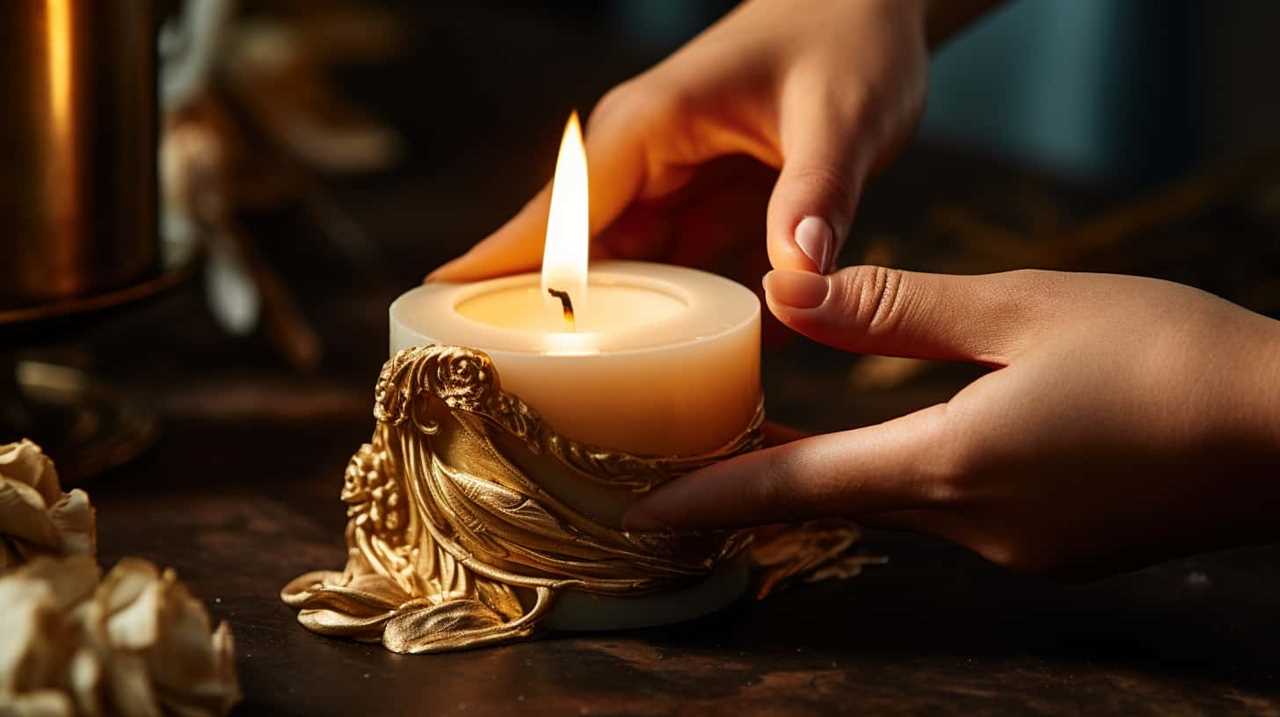
Additionally, the angle at which the light is emitted plays a role in candle power. Narrower angles tend to result in higher candle power, while wider angles lead to lower values.
These factors, among others, are essential to consider when using measurement techniques to determine candle power accurately.
Candle Power Vs Lumens: Understanding the Difference
As we delve into the comparison between candle power and lumens, it becomes clear that understanding the difference is essential. When it comes to measuring the brightness of a light source, lumens are the preferred unit of measurement. Here are three key differences between candle power and lumens:
- Lumen Measurement: Lumens measure the total amount of visible light emitted by a light source. It takes into account the entire range of visible light, making it a more accurate indicator of brightness.
- Candle Power Formula: Candle power, on the other hand, measures the intensity of light in a specific direction. It’s calculated by dividing the total luminous flux by the solid angle in steradians.
- Practical Application: Lumens provide a more practical measurement for everyday use. They help us understand how bright a light source will appear to the human eye, while candle power is more suitable for specialized applications like spotlighting.
Understanding the difference between candle power and lumens allows us to make informed decisions when choosing lighting options for our specific needs.
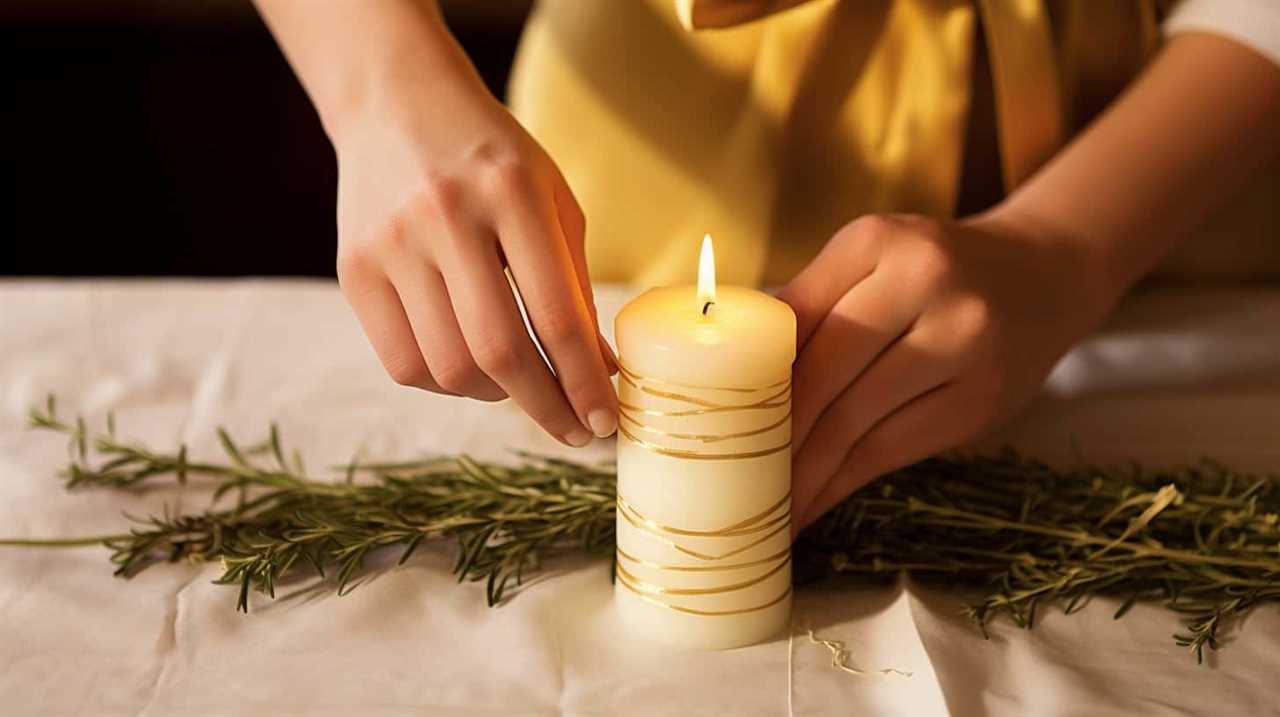
Factors Affecting Candle Power
Although there are several factors that can affect candle power, one important factor to consider is the type of light source being used. Different light sources produce varying levels of candle power due to their unique characteristics.
For example, incandescent bulbs typically have a higher candle power compared to fluorescent or LED bulbs. The quality and condition of the light source can also impact its candle power. Factors such as age, cleanliness, and maintenance can affect the performance of the light source and subsequently its candle power.
Measurement techniques play a crucial role in determining candle power accurately. Using a light meter, the intensity of the light emitted by the source can be measured, providing a quantitative value for candle power.
Practical Applications of Candle Power
Considering the factors that affect candle power, measuring the intensity of light emitted by a source using a light meter provides a quantitative value for assessing its candle power. Understanding the practical applications of candle power can help us serve others better, especially in fields like photography and automotive lighting. Here are three key applications:
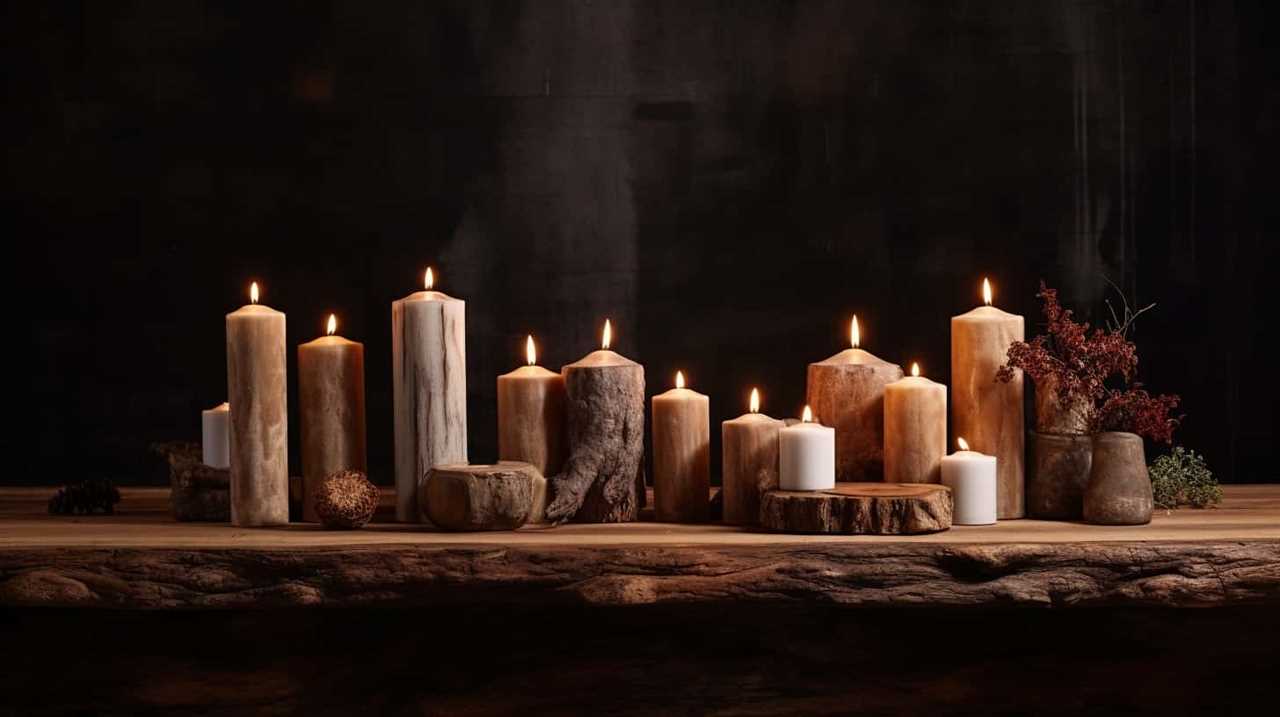
- Candle power in photography: Knowing the candle power of different light sources allows photographers to control the lighting conditions and achieve the desired effects in their photos. Whether it’s studio lighting or outdoor shoots, candle power helps determine the ideal lighting setup for capturing stunning images.
- Candle power in automotive lighting: The candle power of headlights and other automotive lighting systems directly affects visibility on the road. By ensuring a high candle power, drivers can enhance safety by providing optimal illumination and reducing the risk of accidents, especially in low-light or adverse weather conditions.
- Overall illumination assessment: Candle power measurements play a crucial role in assessing the overall lighting conditions in various settings. From evaluating the effectiveness of lighting in commercial spaces to ensuring proper illumination in public areas, candle power measurements aid in creating comfortable and safe environments for everyone.
Understanding the practical applications of candle power allows us to make informed decisions and optimize lighting for different purposes, ultimately serving others by enhancing their experiences in photography and ensuring safety on the roads.
Frequently Asked Questions
How Does Candle Power Affect the Visibility of a Light Source?
The effect of candle power on brightness and the impact of candle power on visibility are closely related. Higher candle power results in greater brightness, which in turn improves the visibility of a light source.
Can Candle Power Be Used to Measure the Efficiency of Different Light Sources?
Candle power can be used to measure the efficiency of different light sources. By comparing the candle power, we can determine the impact on energy consumption, helping us make informed choices.
Are There Any Safety Concerns Related to High Candle Power Light Sources?
Safety concerns may arise with high candle power light sources due to the risks associated with intense heat and potential fire hazards. It is essential to handle such sources with caution and ensure proper ventilation to prevent accidents.

How Does Candle Power Compare to Other Units of Measurement for Light Intensity, Such as Lux or Foot-Candles?
When comparing light intensity, candle power is like a bright star guiding our way. It offers advantages in lighting design, allowing us to measure and understand the power of light in a concise and informative manner.
Can Candle Power Be Used to Determine the Lifespan of a Light Bulb or Lamp?
Candle power is a unit of measurement for light intensity. It can’t be used to determine the lifespan of a light bulb or lamp. Factors affecting candle power include distance, reflectance, and the wattage of the light source.
Conclusion
In conclusion, understanding candle power is essential for determining the brightness of a light source. By measuring the intensity of light emitted from a single candle, candle power provides a standardized unit of measurement.
While it may seem outdated compared to the more commonly used lumens, candle power still holds value in certain applications.
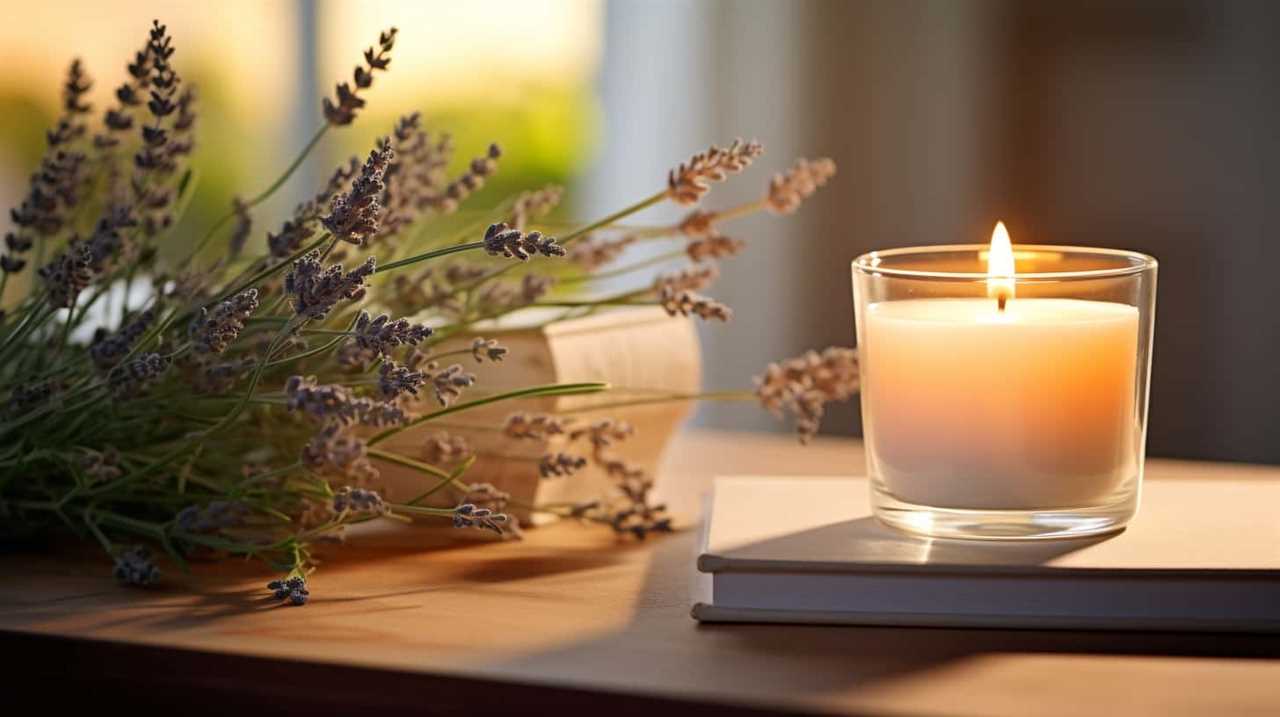
So, next time you’re in a dark room, remember that a little knowledge about candle power can shed light on the situation.
I’m Jane and I love candles. I have candles everywhere in my house–in every room, on every surface. I love the smell of candles, and I love how they make my place feel warm and cozy.
Candles are really important to me. They help me relax and de-stress after a long day. They remind me of happy memories, and they make me feel calm and peaceful. I can’t imagine my life without candles!
Candles
What Is the Melting Point of Candle Wax

Wondering about the specific temperature at which candle wax melts? You’re in for a treat as we have the answer right here!
Understanding the melting point of candle wax is crucial for those who want to create the perfect candles for their loved ones or customers. Different types of candle wax have different melting points, and knowing these points can make a big difference in the quality of your candles.
For instance, let’s take the example of paraffin wax. Its melting point is around 130 to 140 degrees Fahrenheit. By understanding and testing the melting points of various waxes, you can ensure that your candles burn evenly and last longer.
So, let’s dive into the fascinating world of candle wax melting points and discover how it can elevate your candle-making skills!
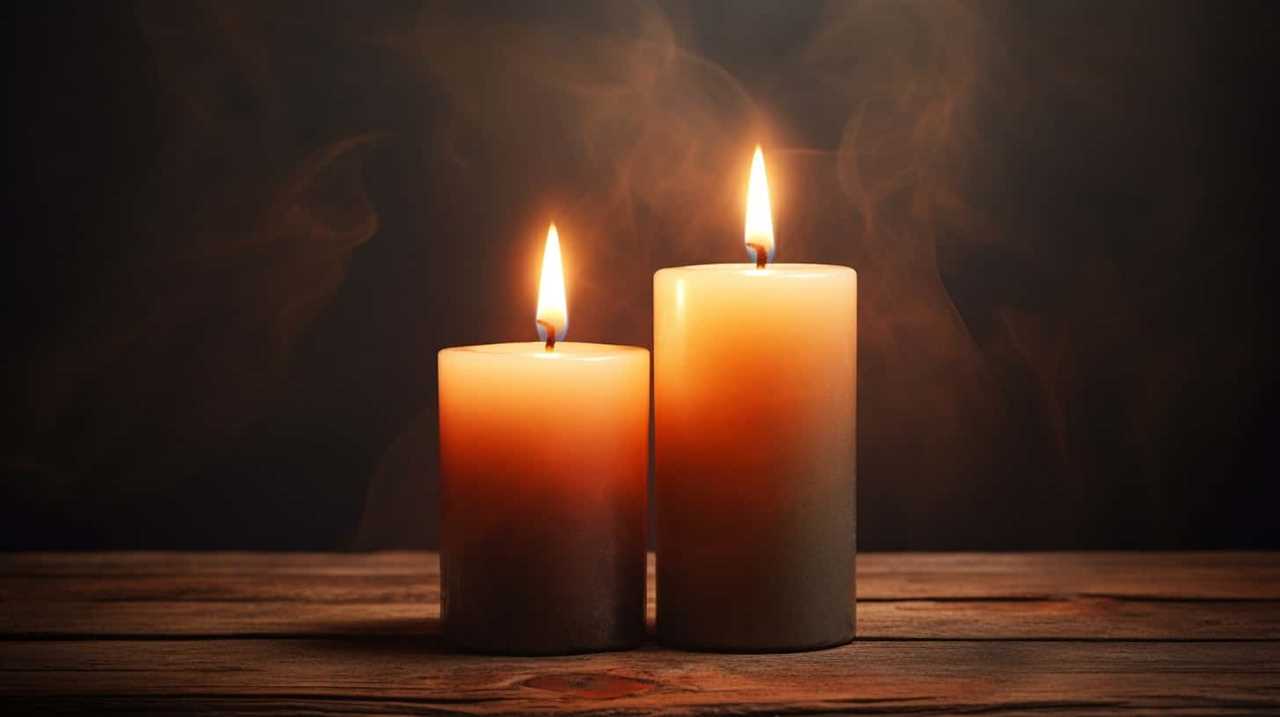
Key Takeaways
- The melting point of candle wax is the temperature at which it transitions from a solid to a liquid state.
- The melting point is important in determining the quality, performance, and behavior of candles.
- Different types of candle wax have different melting points, which affect factors such as burn time and fragrance release.
- Factors that influence the melting point of candle wax include the composition of the wax, heat source, impurities, additives, and container size and shape.
What Is Melting Point
The melting point is the temperature at which a substance transitions from a solid to a liquid state. It’s an important characteristic of a substance, as it helps determine its physical properties and behavior.
Temperature control is crucial in various industries where accurate melting points are required for manufacturing processes. For example, in the pharmaceutical industry, knowing the melting point of a drug substance is essential to ensure its stability and effectiveness.
Impurities can have a significant impact on the melting point of a substance. Even small amounts of impurities can lower the melting point, affecting the integrity and quality of the final product. Therefore, maintaining proper temperature control and minimizing impurities are vital in order to ensure consistent and reliable results in various applications.
Importance of Melting Point for Candles
In our experience with candle making, we’ve found that the melting point of candle wax plays a crucial role in determining the quality and performance of the final product. The importance of temperature control can’t be overstated when it comes to candle making.
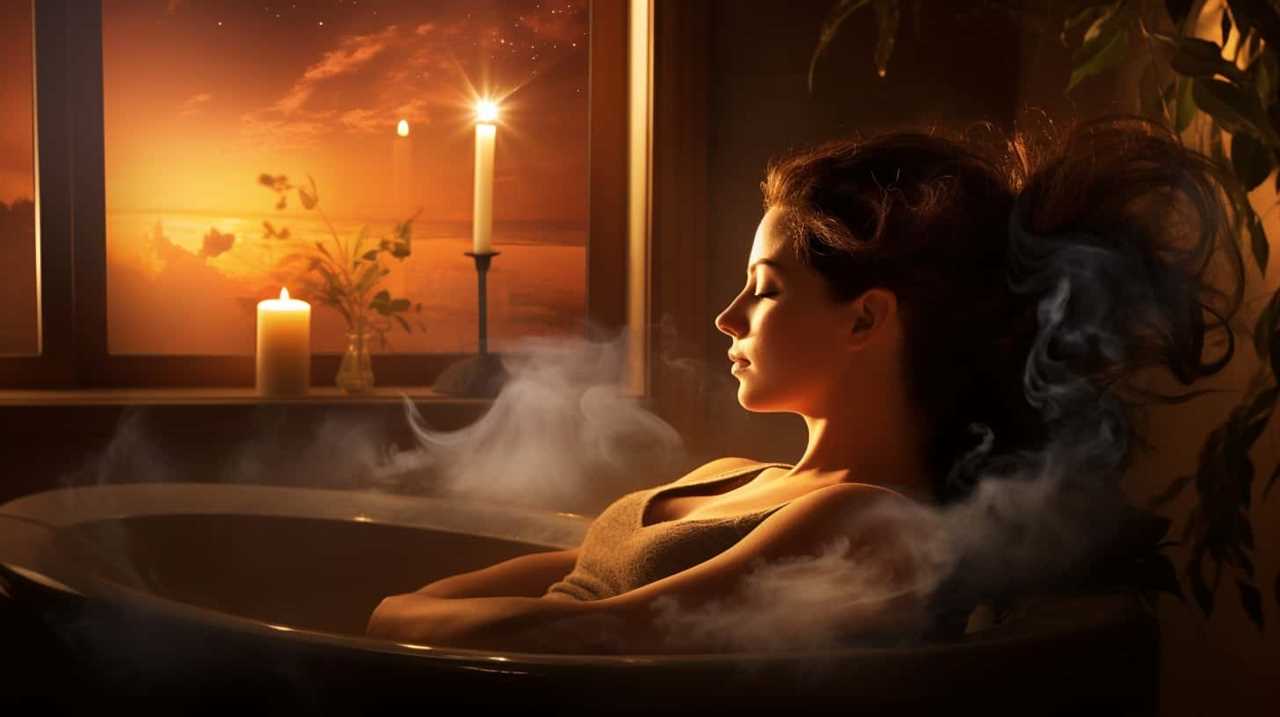
When the wax is melted at the correct temperature, it ensures that the fragrance oils are properly dispersed and that the candle burns evenly and cleanly. If the wax is overheated, it can result in poor scent throw and a weaker fragrance. On the other hand, if the wax isn’t heated enough, the candle may not burn properly or may have a shorter burn time.
Additionally, the melting point of the wax can be affected by the use of additives, such as colorants or fragrance oils. These additives can alter the wax’s melting point, so it’s important to carefully consider their effects when formulating candle recipes.
Types of Candle Wax
When it comes to candle making, we rely on different types of candle wax depending on our specific needs and preferences. Here are four types of candle wax commonly used:
- Paraffin Wax: This petroleum-based wax is widely used due to its affordability and versatility. It has a high melting point, which makes it ideal for creating strong and long-lasting candles.
- Soy Wax: Made from soybean oil, this natural wax is a popular choice among environmentally conscious individuals. It has a lower melting point compared to paraffin wax, resulting in a slower and cleaner burn.
- Beeswax: Derived from bees, this natural wax is known for its sweet scent and golden hue. It has a higher melting point and produces a warm, soft glow when burned.
- Palm Wax: Made from palm oil, this renewable wax has a unique crystalline structure that gives candles a beautiful feathered appearance. It has a moderate melting point and provides excellent scent throw.
Understanding the differences between paraffin wax vs soy wax and beeswax vs palm wax allows us to choose the right type of candle wax for our specific needs, whether it’s for fragrance, sustainability, or aesthetic purposes.
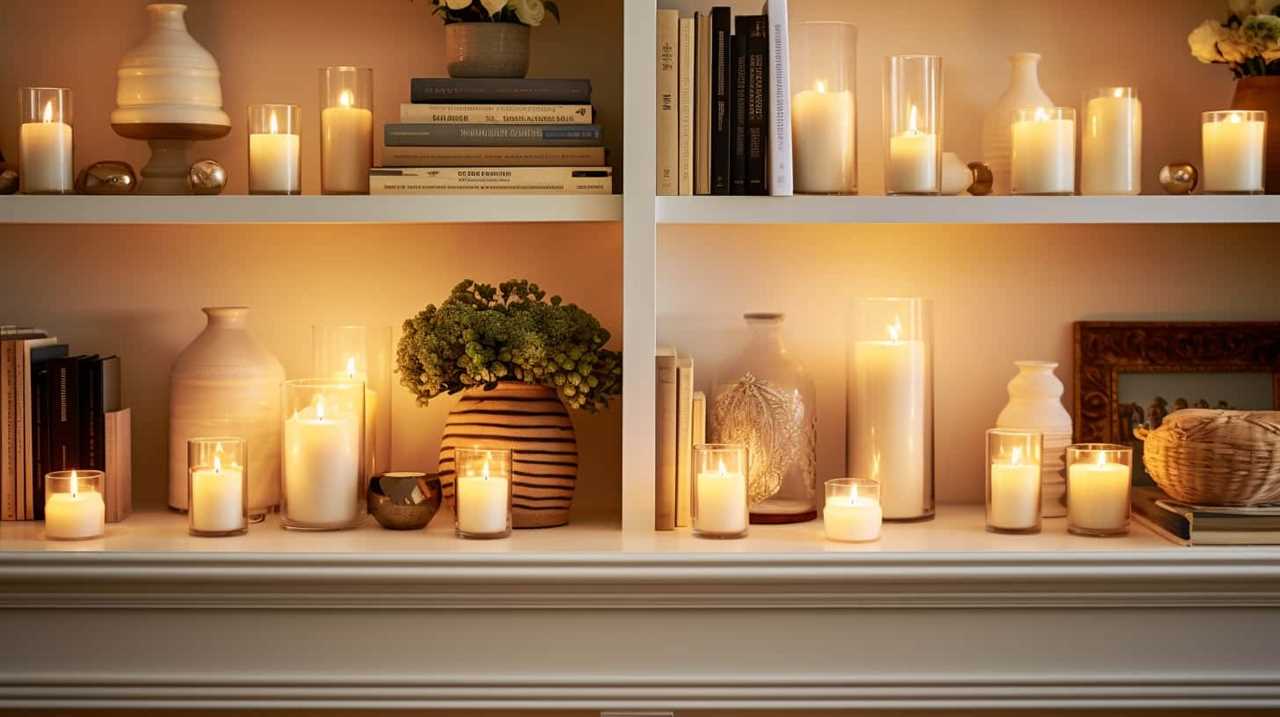
Factors Affecting Melting Point
To understand the factors affecting the melting point of candle wax, we need to consider various elements that play a role in determining this characteristic.
One crucial factor is the composition of the candle wax. Different types of wax, such as paraffin, beeswax, or soy wax, have different melting points due to variations in their chemical composition. For example, paraffin wax has a lower melting point compared to beeswax, making it easier to melt.
Another factor that influences the melting point is the heat source. The temperature and intensity of the heat source can significantly affect the melting point of the wax. A higher heat source will increase the rate of heat transfer, causing the wax to melt at a lower temperature.
Therefore, understanding the candle wax composition and the influence of the heat source is essential in determining the melting point of candle wax.
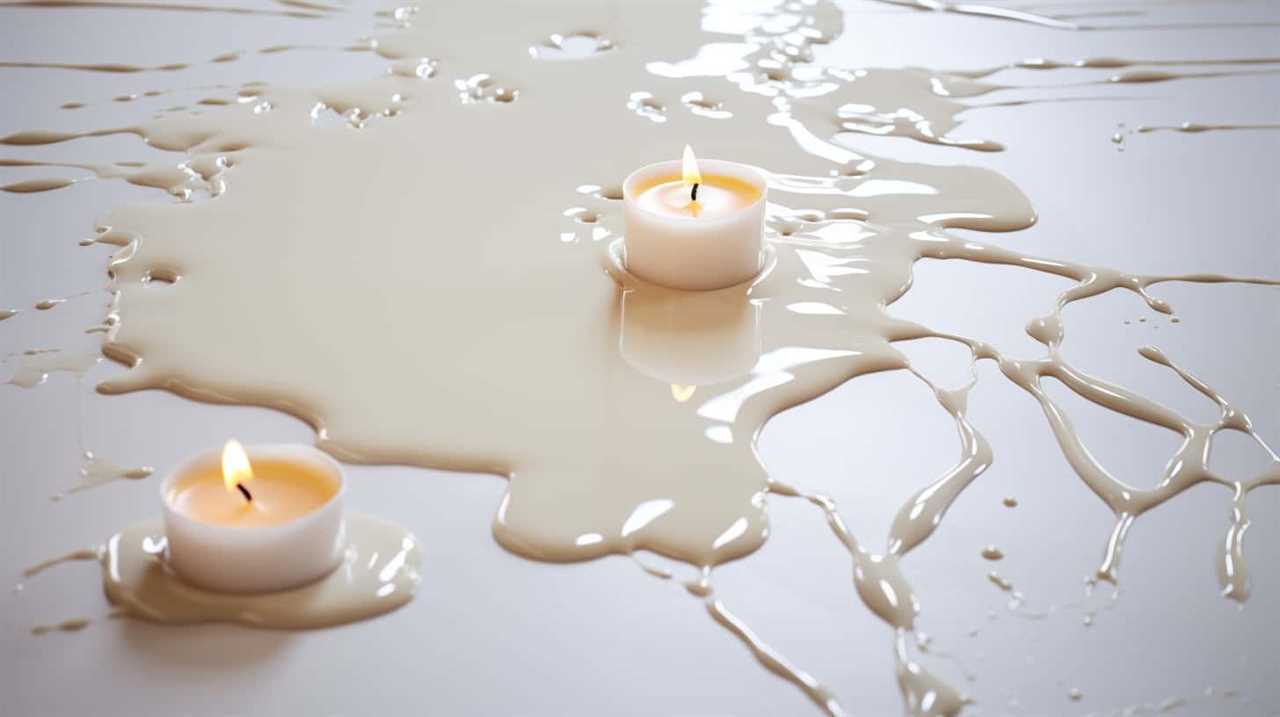
Paraffin Wax and Its Melting Point
When considering the melting point of paraffin wax, it’s important to analyze the factors that affect it. These factors include the molecular structure, purity of the wax, and any additives present.
Additionally, comparing the melting points of different waxes can provide valuable insights into their composition and applications.
Factors Affecting Melting Point
Our research has revealed several factors that influence the melting point of paraffin wax. These factors include:
- Impurities: The presence of impurities, such as additives or contaminants, can lower the melting point of paraffin wax. Higher purity wax tends to have a higher melting point.
- Crystalline Structure: The crystalline structure of paraffin wax can vary depending on factors like the length of the hydrocarbon chain. Waxes with longer chains tend to have higher melting points.
- Molecular Weight: The molecular weight of the wax molecules also affects the melting point. Higher molecular weight waxes generally have higher melting points.
- Temperature Range: The temperature range over which paraffin wax melts can vary depending on the specific formulation and purpose. Different types of paraffin waxes may have different melting points and melting temperature ranges.
Understanding these factors can help in selecting the appropriate paraffin wax for specific applications, ensuring optimal performance and usability.
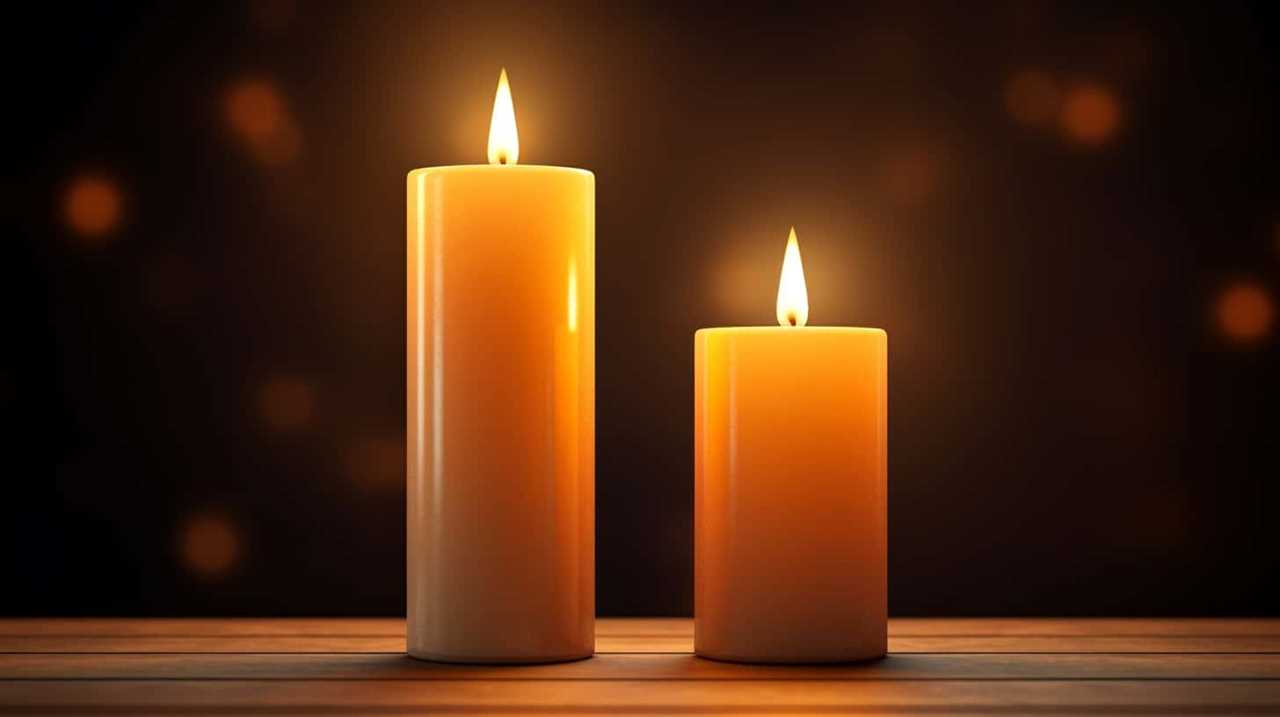
Comparing Different Waxes
We will compare the melting point of paraffin wax to that of other waxes. Comparing melting points is important because it directly affects the performance of a candle.
Paraffin wax, which is derived from petroleum, has a melting point between 120°F and 160°F (49°C to 71°C). This relatively low melting point allows the wax to liquefy quickly when the candle is lit, ensuring a consistent and even burn. Paraffin wax also has a high fragrance capacity, making it a popular choice for scented candles.
Other waxes, such as beeswax and soy wax, have higher melting points. Beeswax melts between 144°F and 147°F (62°C to 64°C), while soy wax melts between 120°F and 180°F (49°C to 82°C). The melting point of a wax can impact the candle’s ability to release fragrance and its overall burn time.
Transitioning to the subsequent section, we’ll now explore soy wax and its melting point.
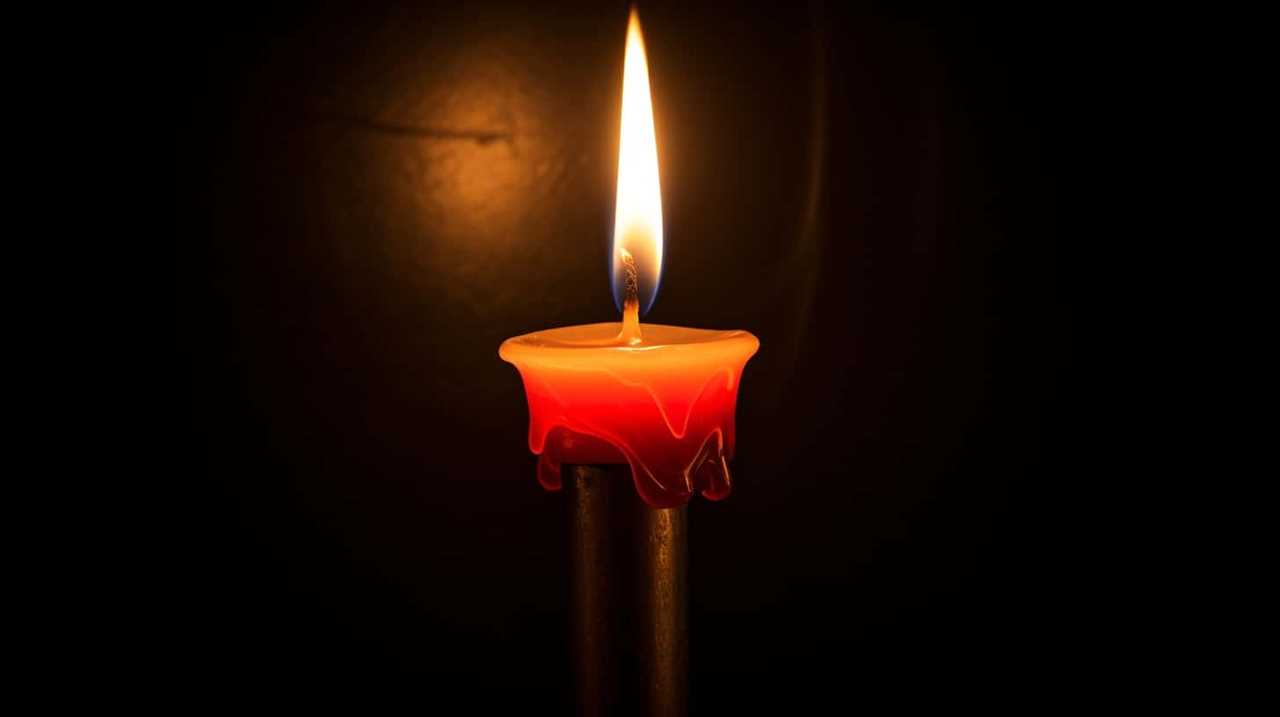
Soy Wax and Its Melting Point
Soy wax has a melting range of approximately 120 to 180 degrees Fahrenheit, making it a suitable choice for candle making.
The melting point of soy wax can be influenced by various factors such as the specific blend of oils used and any additives included.
When compared to other waxes, soy wax tends to have a lower melting point, allowing for a longer burning time and a more gradual release of fragrance.
Soy Wax Melting Range
Typically, soy wax melts at a relatively low temperature, often requiring frequent monitoring during the melting process.
Some key properties of soy wax that contribute to its melting range include:
- Low melting point: Soy wax has a melting point range of around 115 to 125 degrees Fahrenheit (46 to 52 degrees Celsius). This low melting point allows it to melt easily and evenly when exposed to heat.
- Slow cooling: Soy wax has the advantage of a slow cooling process, which results in a longer burning time for candles made from this wax.
- Clean burning: Soy wax is known for its clean and soot-free burn, making it a popular choice for those concerned about air quality.
- Compatibility with fragrance oils: Soy wax has a high fragrance load capacity, allowing it to hold and release scents effectively.
Understanding the melting range of soy wax is crucial for candle makers and enthusiasts to ensure proper melting and pouring techniques, ultimately resulting in high-quality candles.

Factors Affecting Melting
Frequently, candle makers and enthusiasts encounter various factors that influence the melting point of soy wax. These factors can have a significant impact on candle performance and efficiency.
One of the key factors affecting the melting point of soy wax is the type of additives used. Certain additives, such as stearic acid or vybar, can raise the melting point of the wax, making it more suitable for specific candle types or environments.
The purity of the soy wax also plays a role, as impurities can lower the melting point and affect the overall quality of the candle.
Additionally, the container size and shape can influence the melting point, as larger containers may require higher melting points to ensure proper scent throw and burn time.
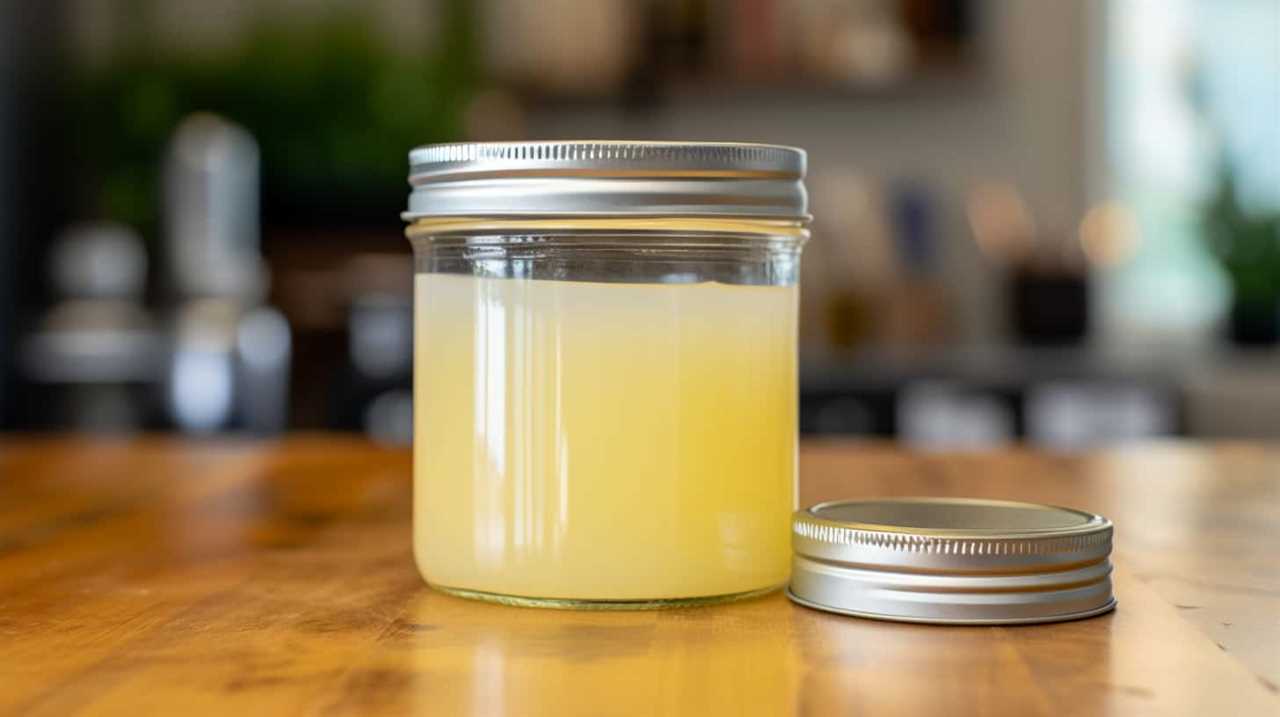
Comparing With Other Waxes
When comparing the melting point of soy wax to other waxes, we can see significant differences in their performance and suitability for various candle types and environments. Here are some key points to consider:
- Soy wax has a lower melting point compared to other waxes, typically ranging from 120-160°F (49-71°C).
- This lower melting point makes soy wax ideal for container candles, as it allows for a slower, more controlled burn.
- Soy wax has a longer burn time compared to other waxes, providing a longer-lasting candle experience.
- The lower melting point of soy wax also makes it easier to handle and work with during the candle-making process.
These differences in wax properties make soy wax a popular choice among candle makers looking for a versatile and high-quality wax option. Its unique melting point and performance characteristics contribute to its appeal in various candle-making applications.
Beeswax and Its Melting Point
In the article, we’ll explore the melting point of beeswax.
Beeswax, a natural wax produced by honeybees, is known for its unique properties and versatility in various applications.

When it comes to melting temperature, beeswax has a relatively low melting point compared to other waxes. The melting point of beeswax typically ranges between 144 to 147 degrees Fahrenheit (62 to 64 degrees Celsius).
This relatively low melting point makes beeswax an ideal choice for candles, as it allows for a slow and even burn. Additionally, the low melting point of beeswax makes it easy to work with in various crafts and skincare products.
Now, let’s move on to the next section where we’ll discuss palm wax and its melting point.
Palm Wax and Its Melting Point
Let’s delve into the melting point of palm wax, a commonly used wax in candle making, and explore its unique properties. Palm wax is derived from the oil palm tree and has gained popularity due to its eco-friendly nature.

Here are some key properties of palm wax and how it compares to other waxes in terms of melting point:
- Palm wax has a melting point ranging from 50 to 60 degrees Celsius.
- It has a higher melting point compared to soy wax, making it more suitable for warmer climates.
- Palm wax has excellent scent retention, allowing for a longer-lasting fragrance.
- Its smooth and creamy texture gives candles a luxurious appearance.
Understanding these palm wax properties and its melting point comparison lays a foundation for exploring blended waxes and their melting points.
Blended Waxes and Their Melting Points
When it comes to blended waxes and their melting points, there are several factors that come into play.
The composition of the blend, including the types and proportions of different waxes used, can greatly influence the melting point.
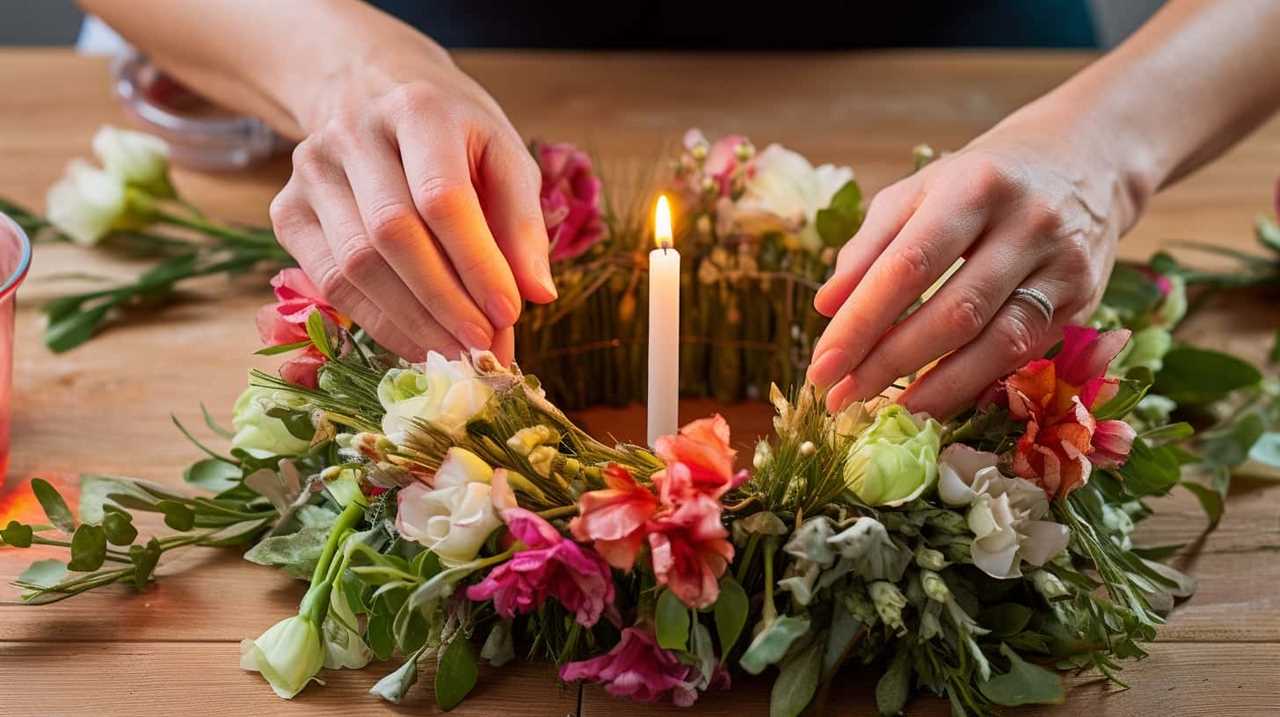
Additionally, additives or modifiers can also impact the melting point of the blend.
Factors Affecting Melting Points
We can explore the factors that influence the melting points of blended waxes by considering their composition and additives. Here are four key factors to consider:
- Molecular structure: The arrangement and size of molecules in the wax can affect its melting point. Waxes with longer hydrocarbon chains tend to have higher melting points, as the intermolecular forces between the molecules are stronger.
- Temperature control: The rate at which the wax is heated and cooled can also impact its melting point. Slow heating and gradual cooling can lead to a higher melting point, while rapid temperature changes can lower it.
- Additives: Certain additives, such as stearic acid or beeswax, can modify the melting point of the wax. These additives can either raise or lower the melting point depending on their chemical properties.
- Blending ratios: The proportions of different waxes in a blend can affect the overall melting point. Mixing waxes with different melting points can result in a blend with an intermediate melting point.
Understanding these factors is essential when comparing different wax blends and determining their suitability for specific applications.
Comparing Different Wax Blends
To compare different wax blends and their melting points, we can analyze the composition and additives of each blend. By understanding the properties of various waxes, we can determine the optimal melting temperature for different applications. The table below provides a comparison of three common wax blends used in candle making:

| Wax Blend | Composition | Melting Point |
|---|---|---|
| Paraffin | Petroleum-based | 130-150°F |
| Soy | Vegetable-based | 120-145°F |
| Beeswax | Natural beeswax | 144-147°F |
Paraffin wax, being petroleum-based, has a higher melting point compared to soy wax, which is derived from vegetable sources. Beeswax, a natural option, has the highest melting point among the three. When choosing a wax blend, it is important to consider the desired burning time, scent throw, and appearance. By comparing wax properties and their optimal melting temperatures, you can select the most suitable blend for your candle-making needs.
Practical Applications and Uses
For a variety of practical applications and uses, blended waxes with different melting points offer a range of options. These blends combine different types of waxes to create a desired melting point, enhancing their versatility and functionality.
Here are some practical uses of blended waxes and their benefits and drawbacks:
- Candle making: Blended waxes allow for customization of candle melting points, enabling the creation of candles that burn longer or have specific fragrance release profiles.
- Cosmetics and personal care products: Blended waxes are used in lip balms, lotions, and creams to provide desired consistency and stability.
- Adhesive and coating industries: Blended waxes with controlled melting points are used in adhesives and coatings to improve performance and durability.
- Food industry: Blended waxes find applications in food coatings, where specific melting points are required for proper adhesion and texture.
The benefits of blended waxes include enhanced flexibility, improved performance, and increased control over melting characteristics. However, drawbacks may include increased complexity in formulation and potential changes in other properties such as color or scent.

Testing and Determining Melting Point
Determining the melting point of candle wax involves conducting tests to measure the temperature at which it transitions from a solid to a liquid state. To achieve accurate results, various testing techniques can be employed. One common method is the capillary tube method, where a small sample of the wax is placed in a thin glass tube and heated slowly until it melts. The temperature is recorded when the first drop of liquid appears. Another technique is the hot stage microscopy, which involves observing the wax sample under a microscope while gradually increasing the temperature until melting occurs. This allows for precise determination of the melting point. To ensure temperature accuracy, calibrated thermometers and digital temperature probes can be used. These tools provide reliable and precise measurements, crucial for accurate melting point determination.
| Testing Technique | Description |
|---|---|
| Capillary Tube Method | A small sample of wax is heated slowly in a thin glass tube until it melts. The temperature is recorded when the first drop of liquid appears. |
| Hot Stage Microscopy | The wax sample is observed under a microscope while gradually increasing the temperature until melting occurs. This allows for precise determination of the melting point. |
Determining the melting point of candle wax requires careful attention to detail and accurate temperature measurements. By employing suitable testing techniques and ensuring temperature accuracy, one can obtain reliable results for this important property of candle wax.
Practical Applications of Melting Point in Candle Making
As we delve into the practical applications of the melting point in candle making, it becomes evident that understanding this property plays a crucial role in achieving desirable candle characteristics. The melting point of candle wax is a key factor in determining its burn time, scent throw, and overall performance.
Here are four practical applications of melting point in candle making:
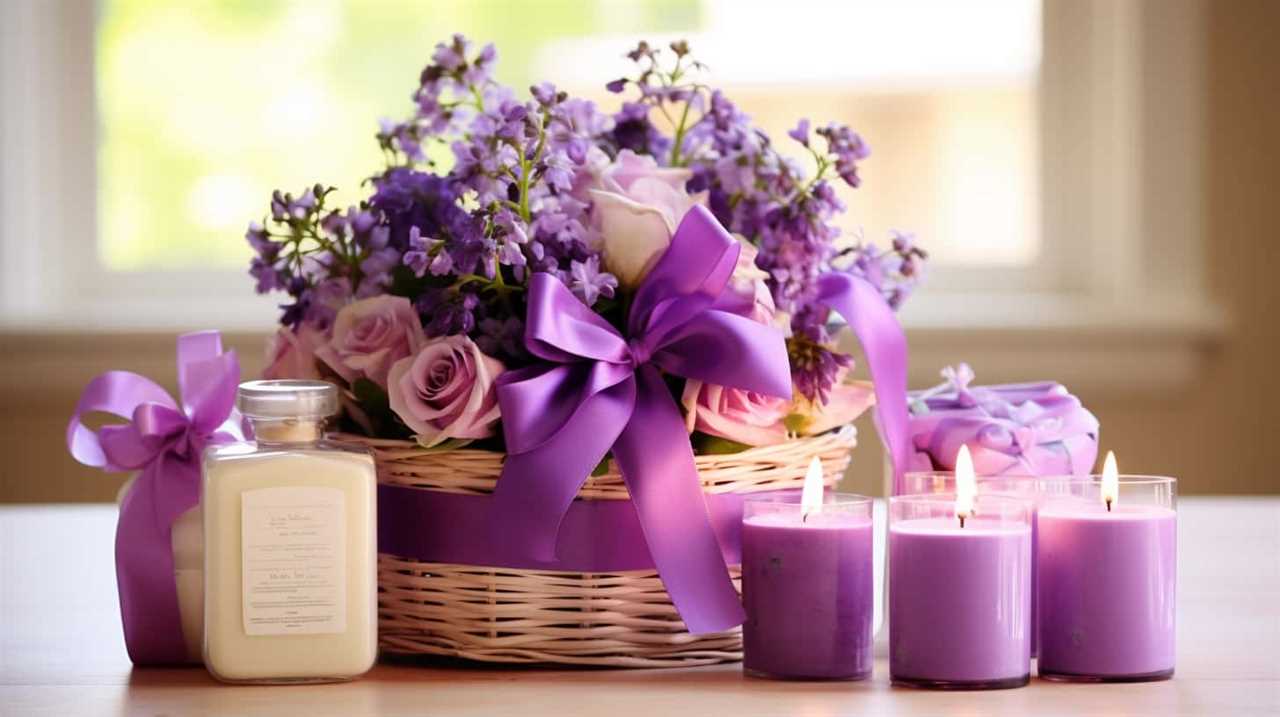
- Control of burn time: By selecting a wax with a specific melting point, candle makers can regulate the rate at which the wax melts and therefore control the burn time of the candle.
- Scent release: Different fragrance oils have different flashpoints, which can affect the scent throw of a candle. By matching the melting point of the wax with the flashpoint of the fragrance oil, candle makers can optimize the release of the scent.
- Stability: Understanding the melting point allows candle makers to choose waxes that provide stability during the manufacturing process and when the candle is in use.
- Aesthetics: The melting point of wax can impact the appearance of a candle, influencing factors such as texture, color, and the formation of a desirable melt pool.
Frequently Asked Questions
How Does the Melting Point of Candle Wax Affect the Overall Burn Time of a Candle?
The melting point of candle wax directly influences the burn time and efficiency of a candle. By retaining heat at higher melting points, the wax burns more slowly and efficiently, resulting in a longer-lasting candle.
Can the Melting Point of Candle Wax Be Adjusted to Create Different Types of Candles, Such as Dripless or Scented Candles?
Yes, the melting point of candle wax can be adjusted to create different types of candles. This allows for the creation of dripless or scented candles, providing a more enjoyable and convenient experience for customers.
Are There Any Safety Concerns Associated With Using Candle Wax With a High Melting Point?
Safety precautions should be taken when working with candle wax with a high melting point. Proper temperature control is crucial to prevent burns or fires. It is important to handle the wax carefully and follow recommended safety guidelines.
How Does the Melting Point of Candle Wax Affect the Fragrance Throw of Scented Candles?
The melting point of candle wax directly affects the fragrance release and scent retention of scented candles. Higher melting points allow for longer burn times and better scent retention, resulting in a stronger and longer-lasting fragrance throw.
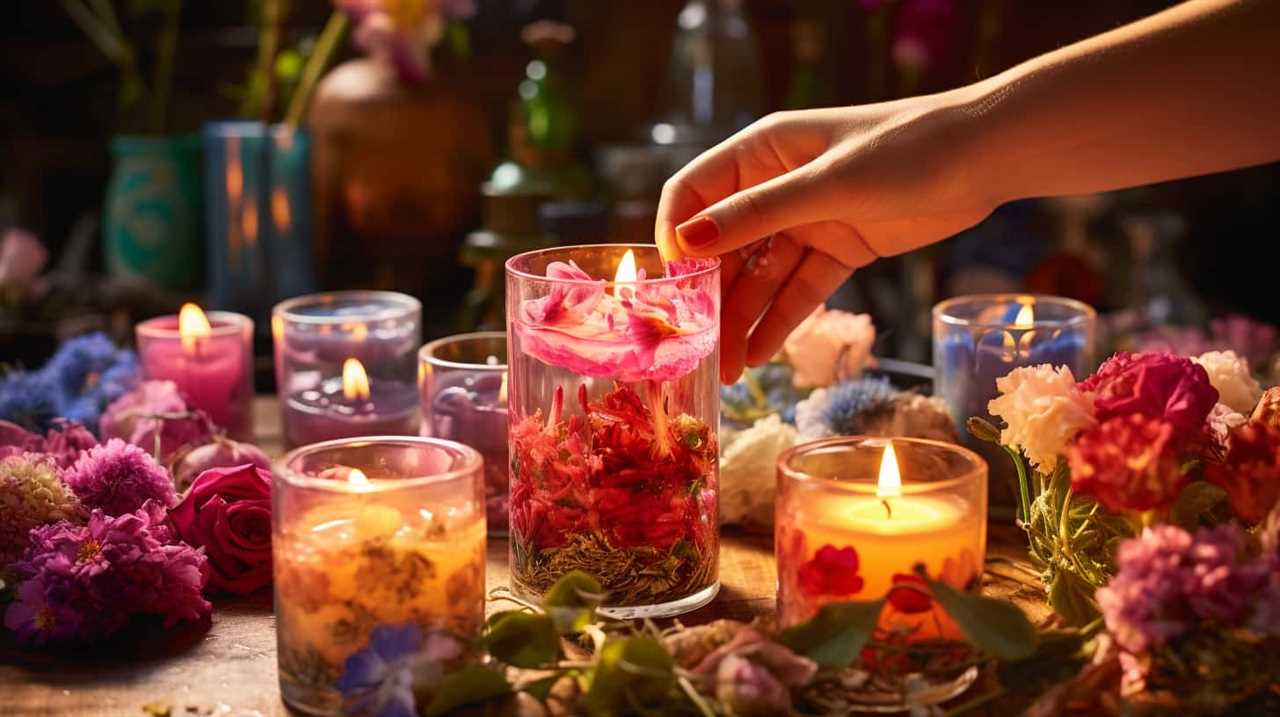
Can the Melting Point of Candle Wax Affect the Appearance or Texture of the Finished Candle?
The melting point of candle wax impacts its appearance and texture. A higher melting point results in a smoother texture and better moldability, while lower melting points can affect color and lead to a rougher finish.
Conclusion
In conclusion, understanding the melting point of candle wax is crucial for candle makers. By knowing the melting point, they can select the right wax for their desired candle characteristics. Factors like the type of wax and blending different waxes can also affect the melting point.
Testing and determining the melting point helps ensure the quality and performance of the candles. Overall, the melting point is a key factor in the art and science of candle making, like a compass guiding makers toward creating beautiful, long-lasting candles.
I’m Jane and I love candles. I have candles everywhere in my house–in every room, on every surface. I love the smell of candles, and I love how they make my place feel warm and cozy.
Candles are really important to me. They help me relax and de-stress after a long day. They remind me of happy memories, and they make me feel calm and peaceful. I can’t imagine my life without candles!
-
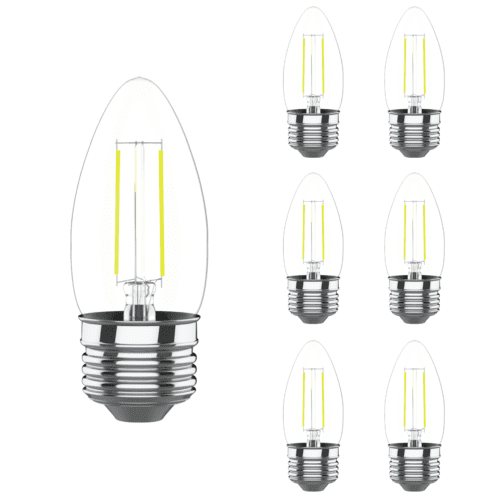
 Beginners Guides1 week ago
Beginners Guides1 week agoThe Similarities of Candle and Light Bulb Lamps
-

 Beginners Guides7 days ago
Beginners Guides7 days agoHow to Determine If Candles Will Melt Outside
-

 Beginners Guides3 months ago
Beginners Guides3 months agoHow To Burn A Candle Without A Wick
-
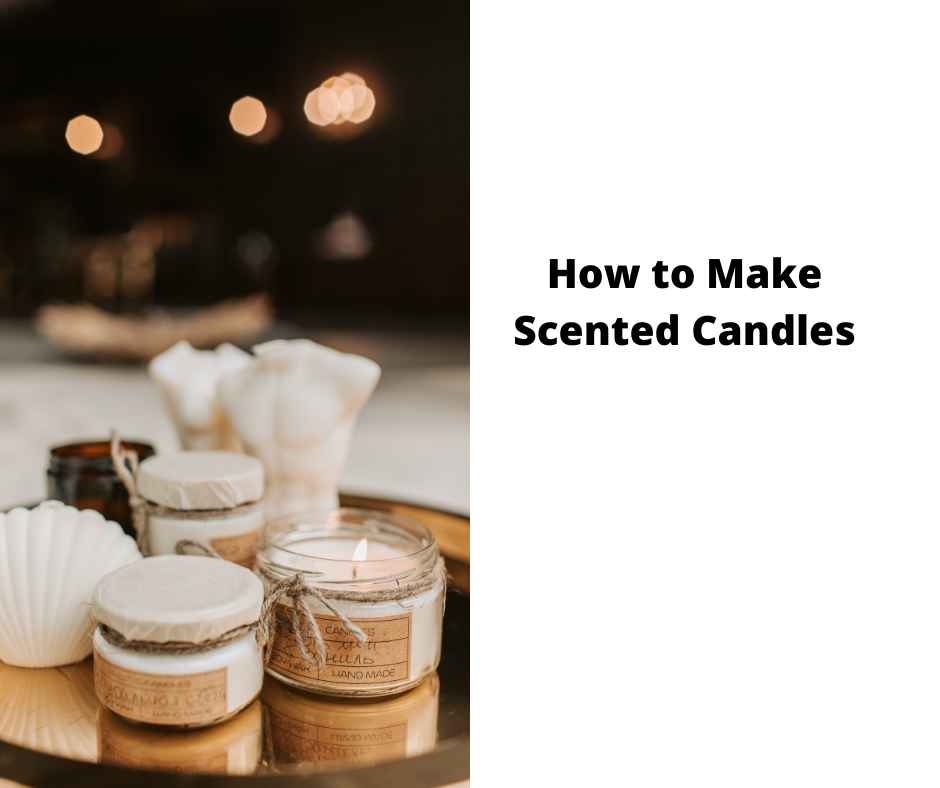
 Candles3 weeks ago
Candles3 weeks agoHow to Make Scented Candles
-

 Beginners Guides3 weeks ago
Beginners Guides3 weeks agoAre Yankee Candles Vegan?
-
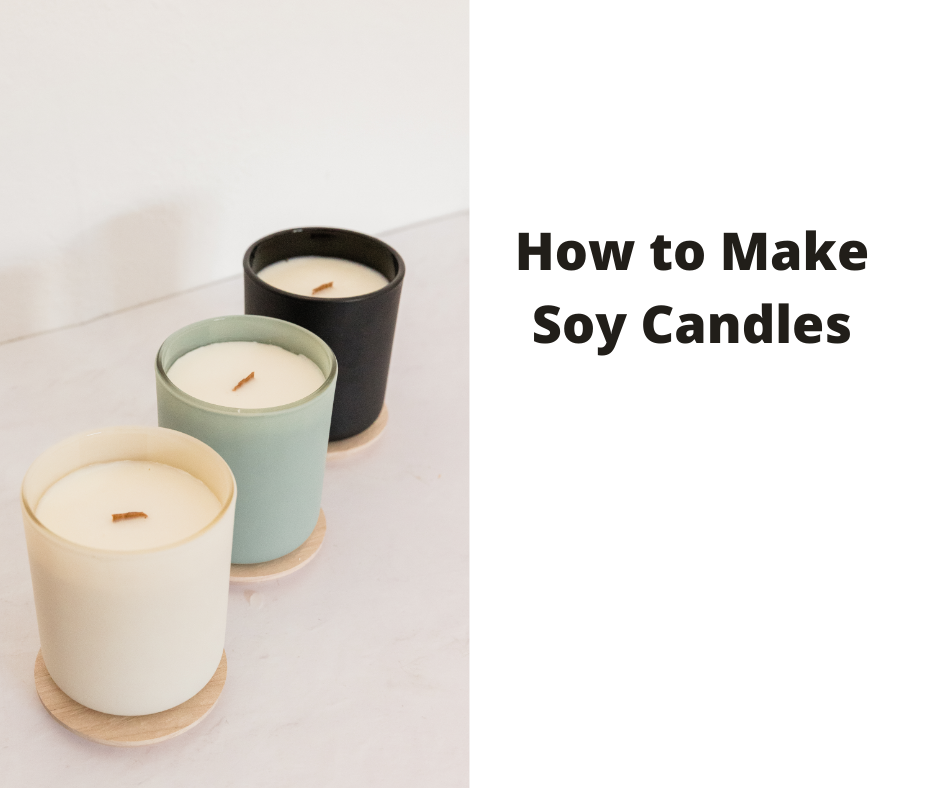
 Beginners Guides3 weeks ago
Beginners Guides3 weeks agoHow to Make Soy Candles
-

 Beginners Guides1 month ago
Beginners Guides1 month agoHow to Make Candles in 5 Easy Steps
-

 Beginners Guides1 week ago
Beginners Guides1 week agoWhy is My Candle Not Sticking to the Glass?






